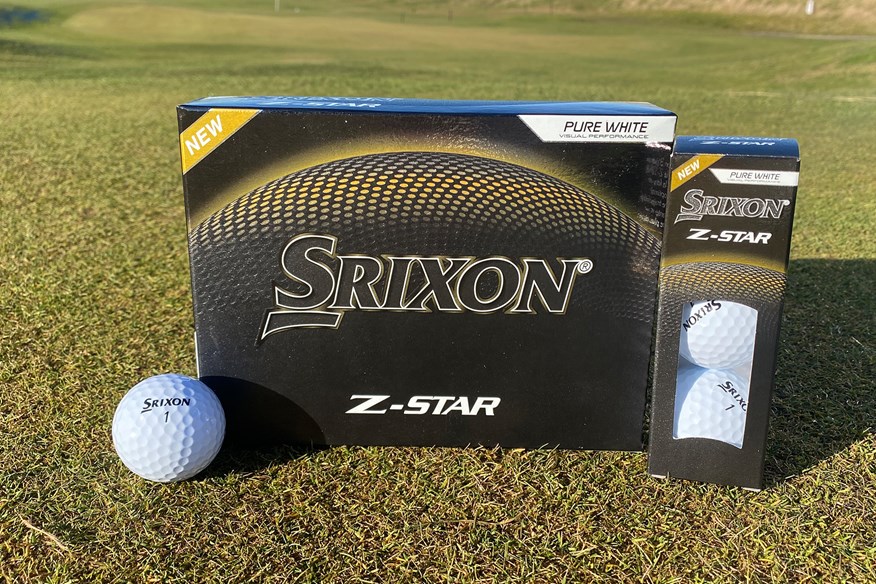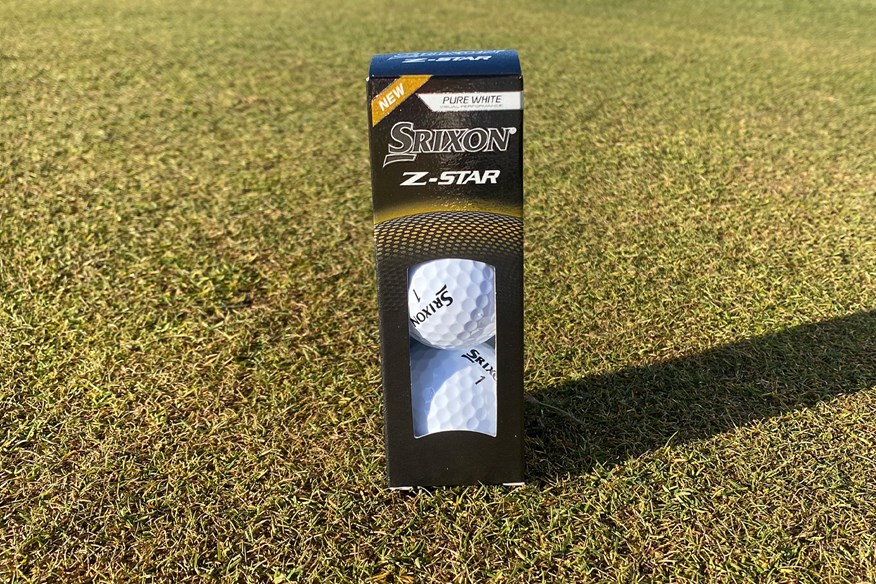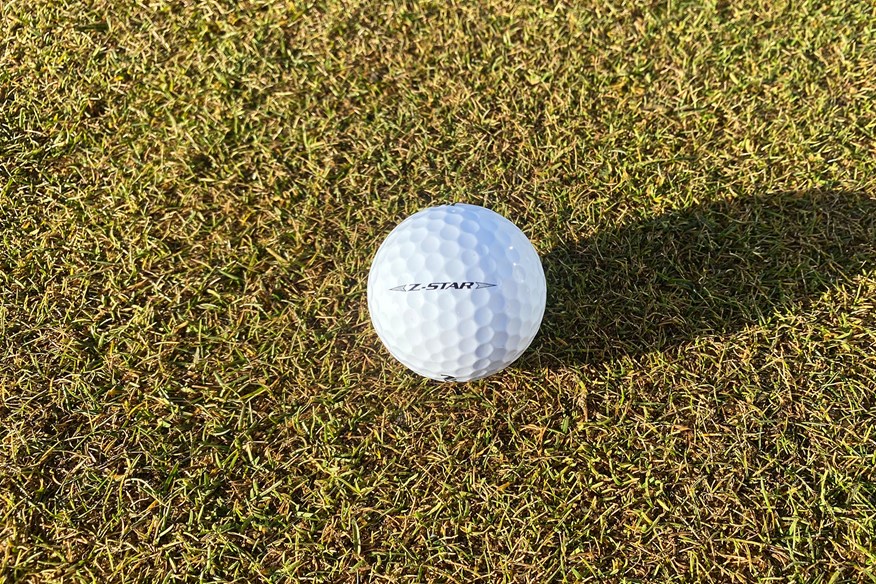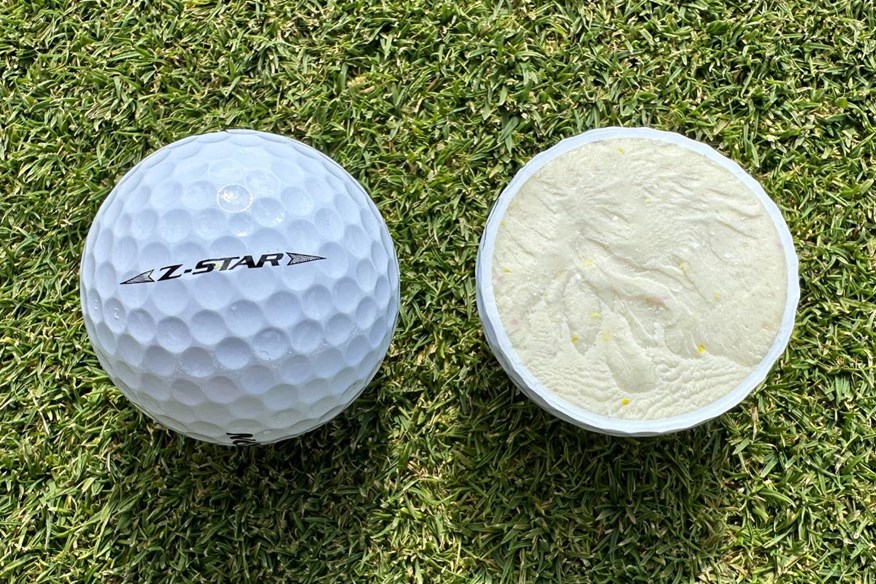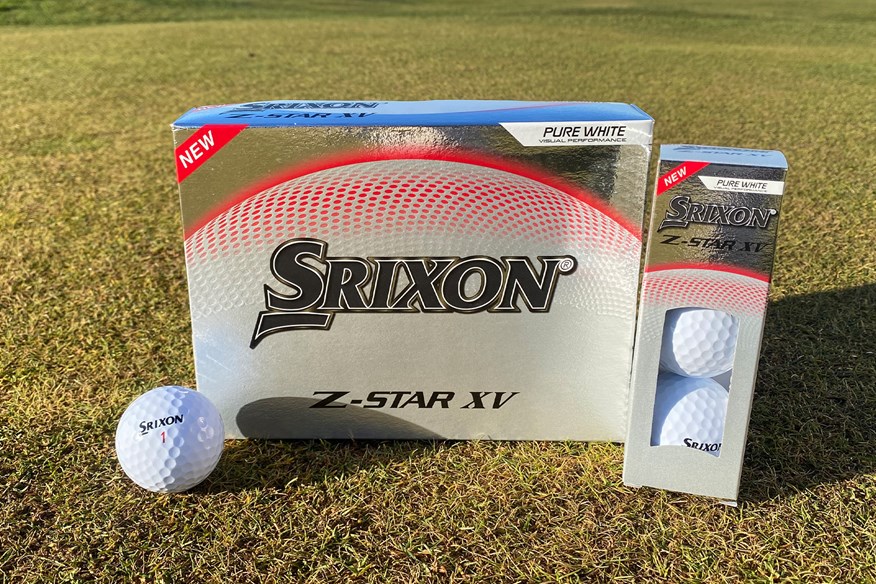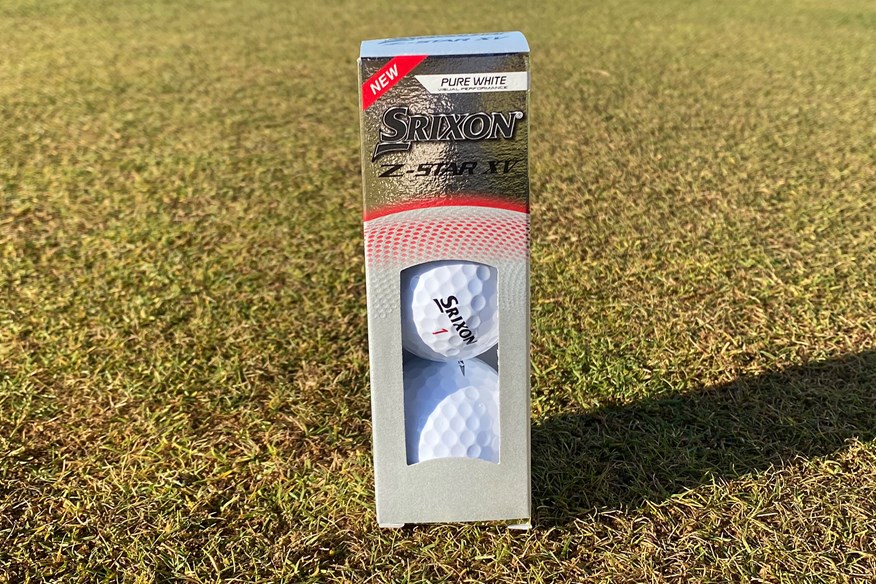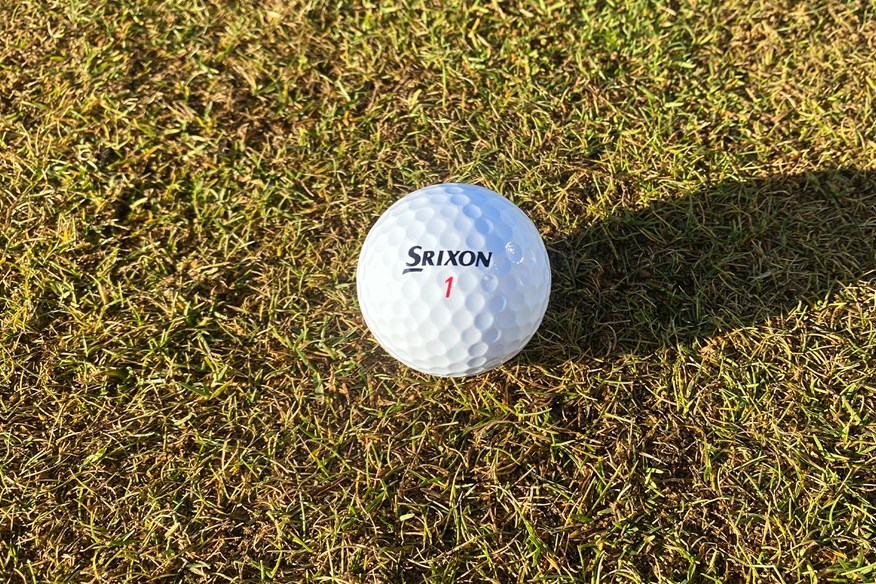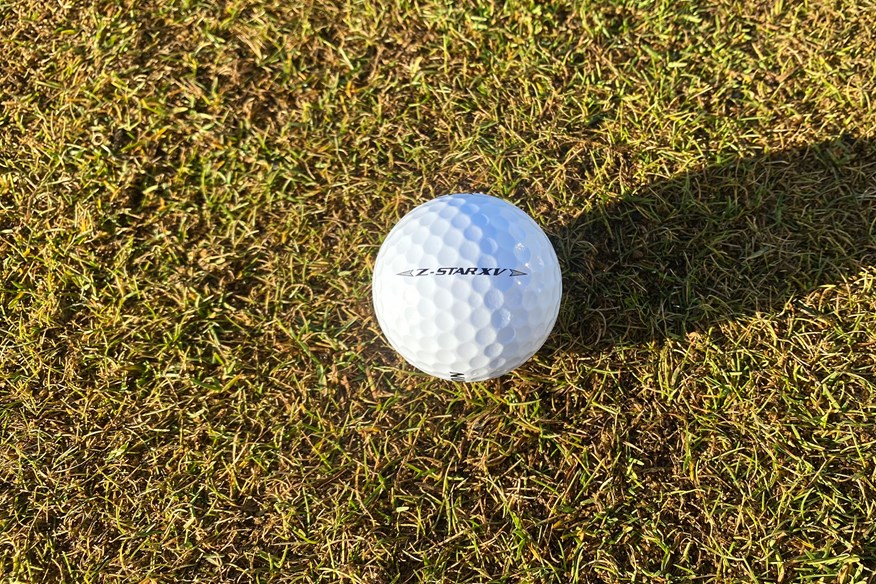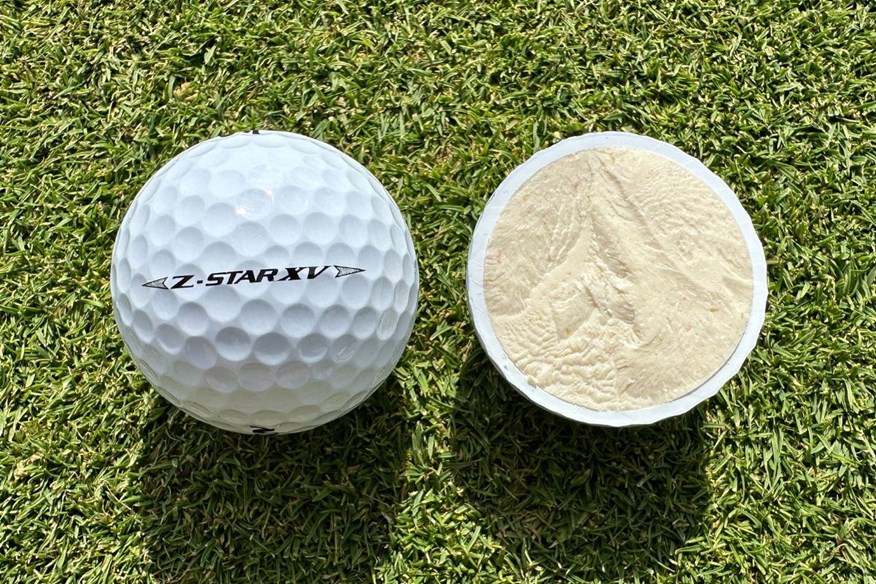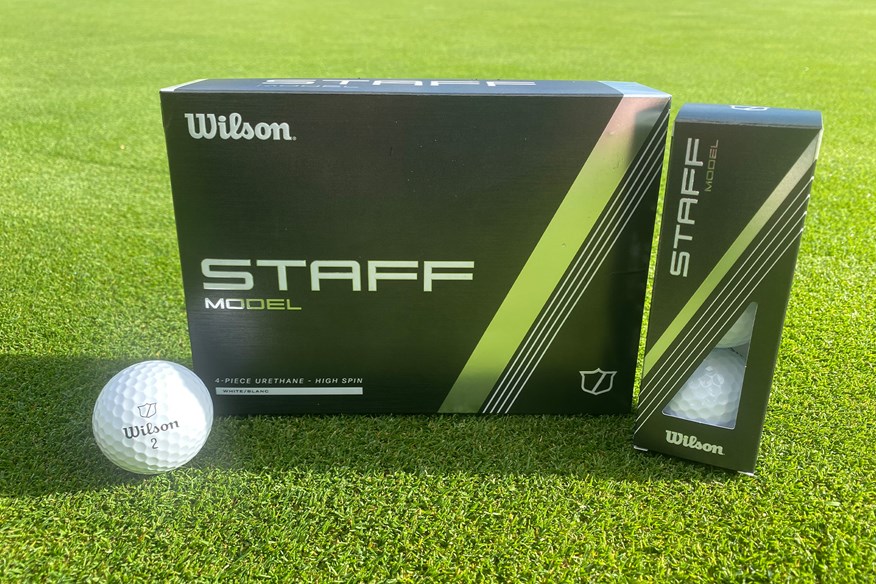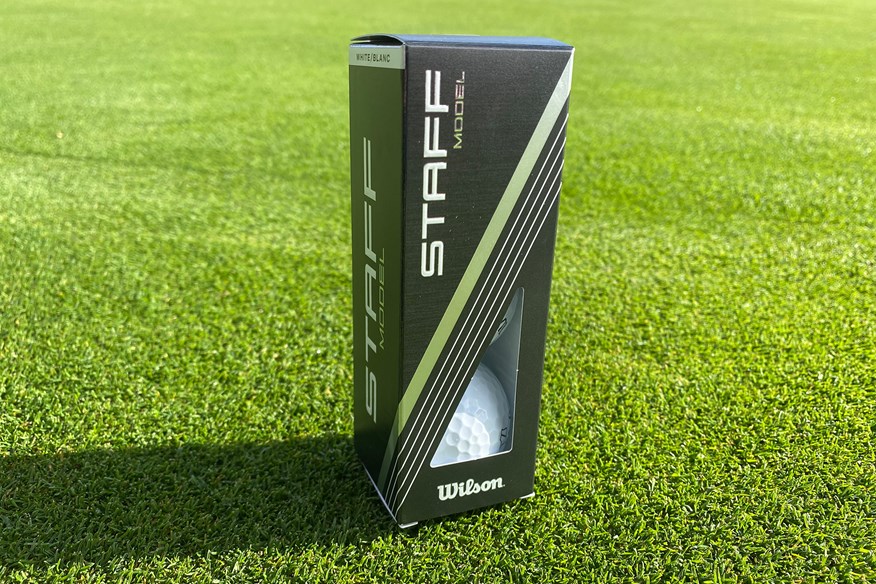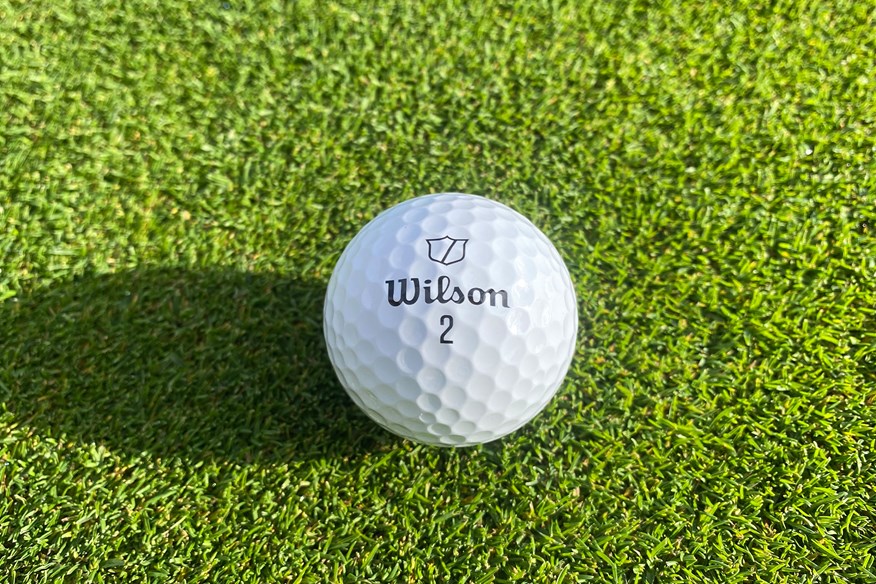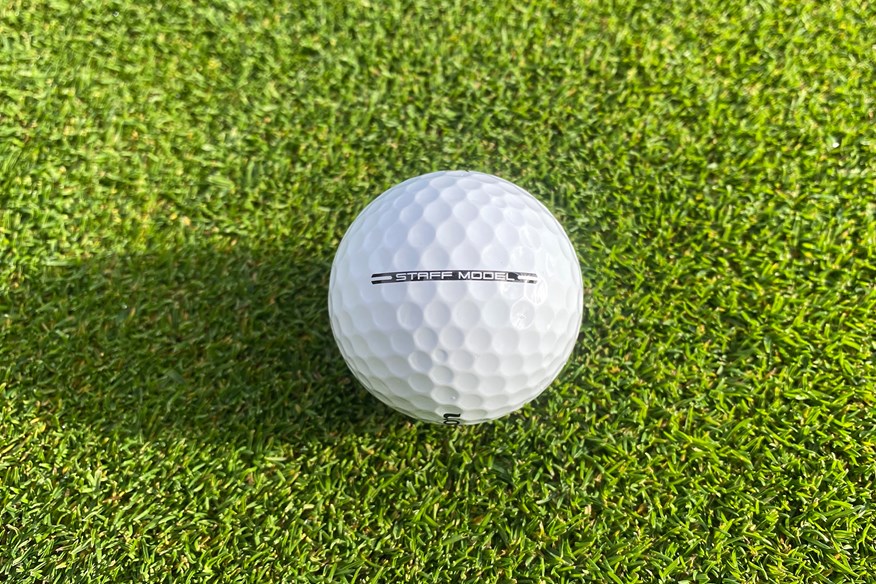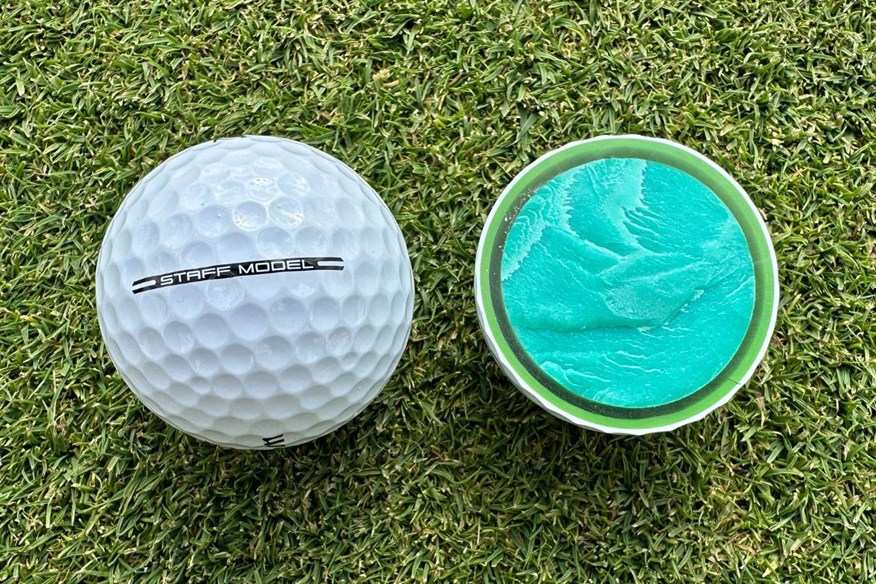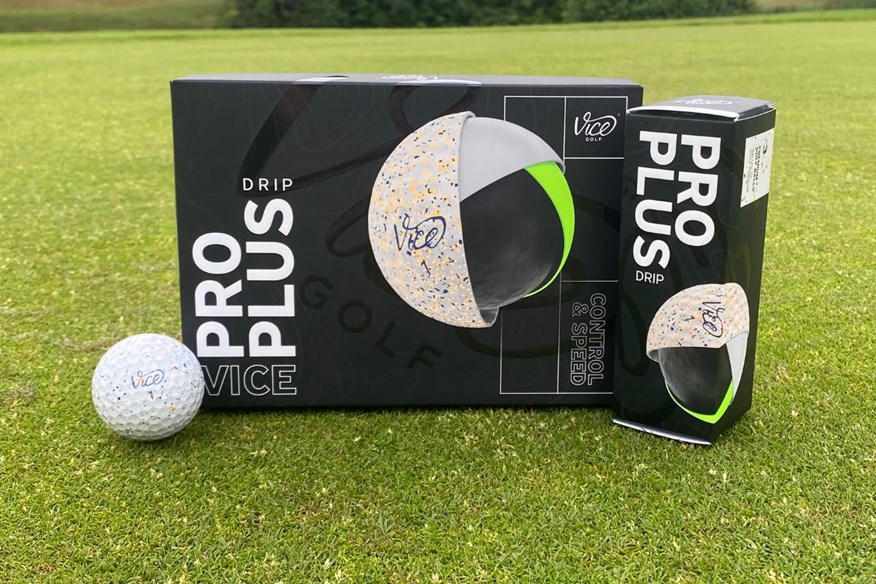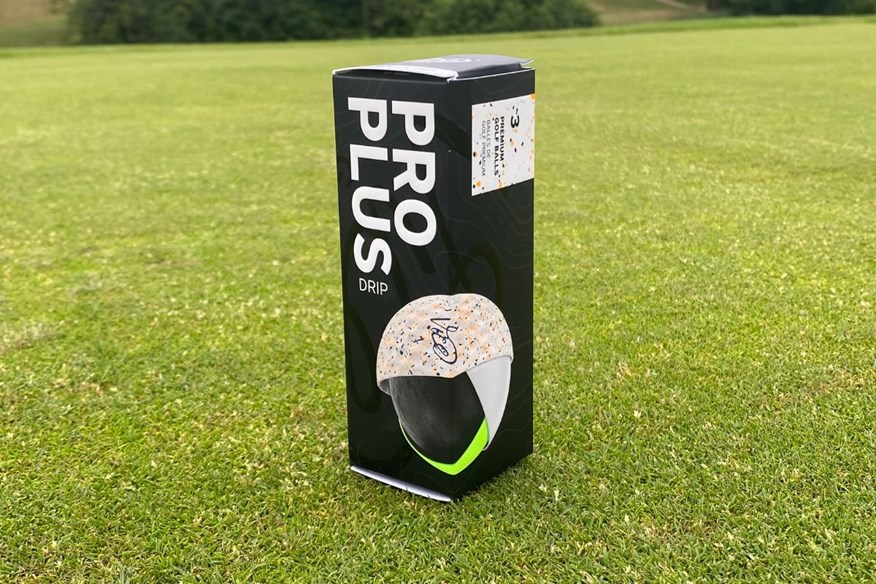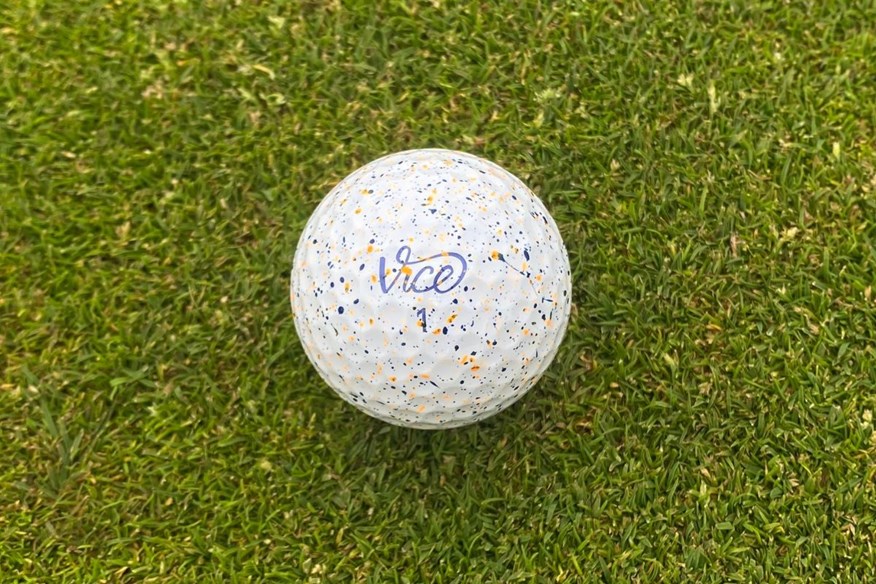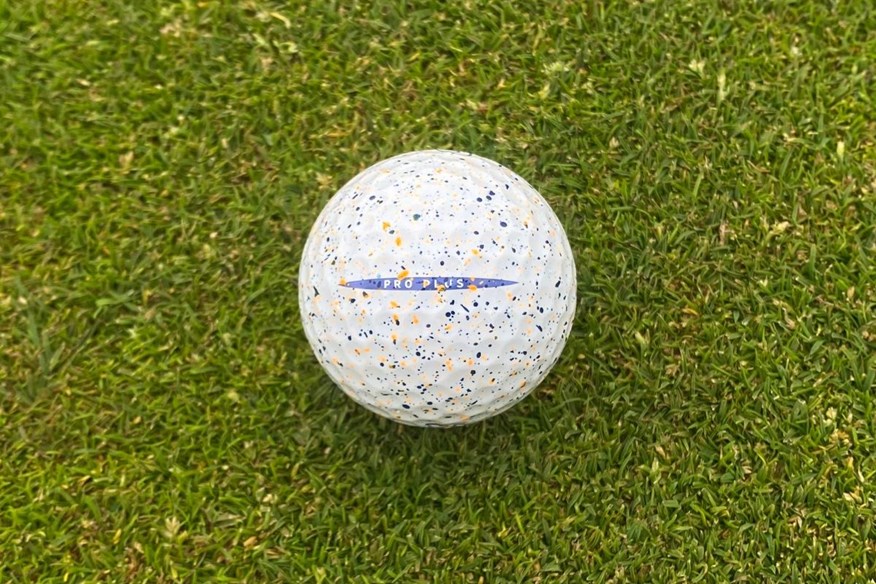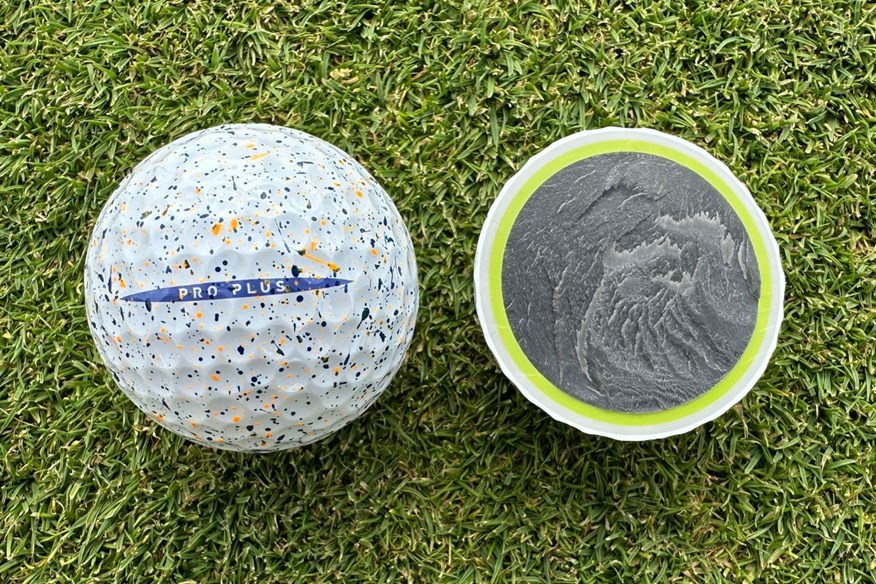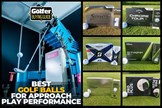Best golf balls for approach play 2025: 62 models robot tested to help you attack pins
Last updated:
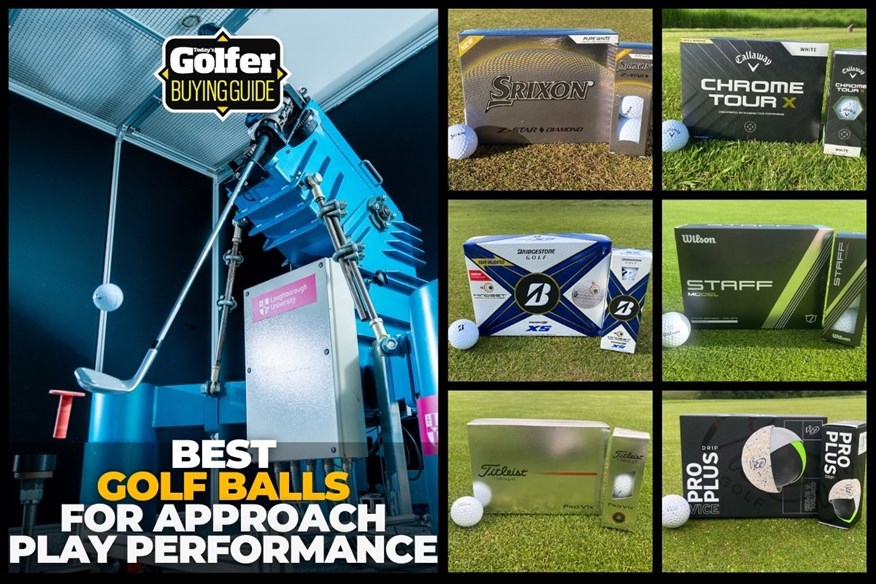
Click here to find out how we conducted our 2025 golf balls test
The best golf balls for approach play need to give you as much control as possible. We’ve robot-tested the most popular and most-played golf balls this year to see which models are the best.
Jump to:
When it comes to approach shots, some golf balls simply perform better than others. The best golf balls for approach play give you control, precision, and spin when playing into the greens – exactly what you need to stop the ball close to the pin. Across our testing, the golf balls that excelled in approach situations were consistently the high-performance premium models favored by professionals.
Of the 62 balls we put through our massive robot testing, 10 stood out for their approach play, coming from six top brands. We’ve also tested every ball on-course, from elite Tour-level options to popular Direct-to-Consumer models, giving you not just robot data, but expert insights on how they handle real-world shots.
- 2025 golf ball robot test: 62 golf balls, 2,232 shots, 50,000 data points… find out what’s No.1 for you
- How we test golf equipment at Today’s Golfer
The key to a ball that shines on approach is how it reacts when playing into greens: spin, feel, and control. These balls allow you to shape shots, stop them quickly, and hit more greens in regulation (GIR). While some lower-tier balls can still get the job done, the best approach balls give you that extra margin for precision that can shave strokes off your score.
For golfers who want to take their game seriously, investing in a ball that excels on approach shots is a game-changer. Yes, these balls are often among the higher-priced options, but think of it this way: one small upgrade can instantly improve your game more than hours of practice, and still costs less than a new driver!
Best golf balls for approach play: At a glance
If your priority is precision and spin when attacking flags, focusing on the best golf balls for approach play is a smart move. They’re perfect for golfers who want more control, better feel, and the confidence to attack pins from anywhere on the fairway
Should you miss a green, you might also want to check out the best golf balls for short game. That way, if you do find yourself looking to get up and down, you’ll have the best option at your disposal.
Best golf balls for approach play 2025
The most dominant 3-piece Tour-level golf ball
Best overall golf ball for approach play


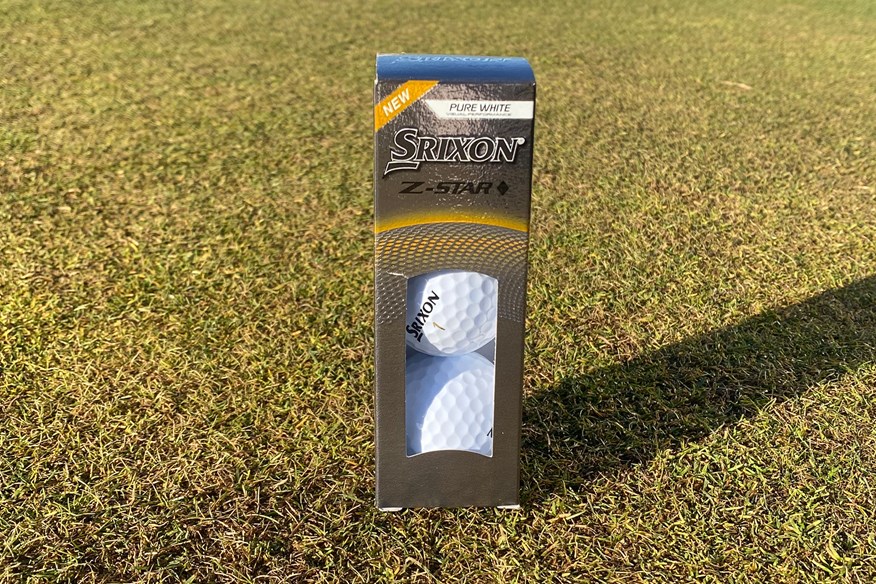
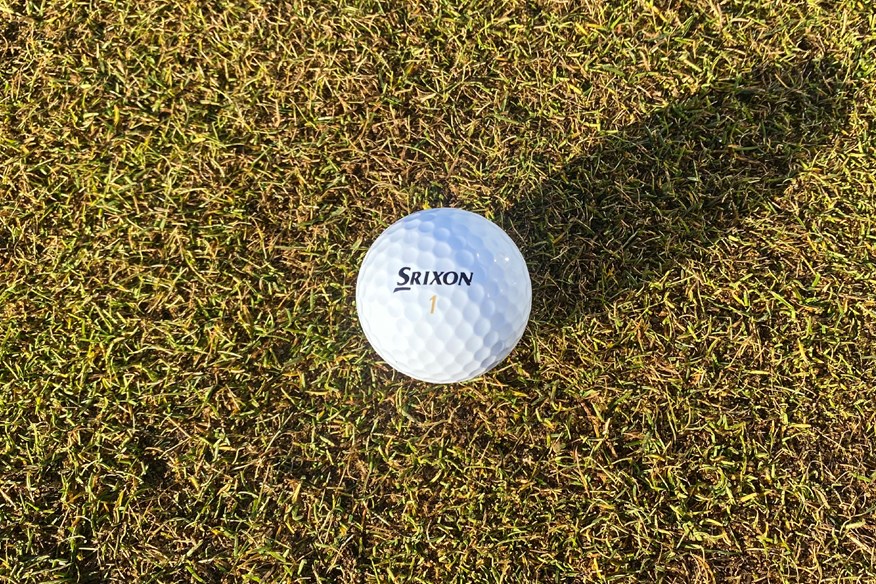
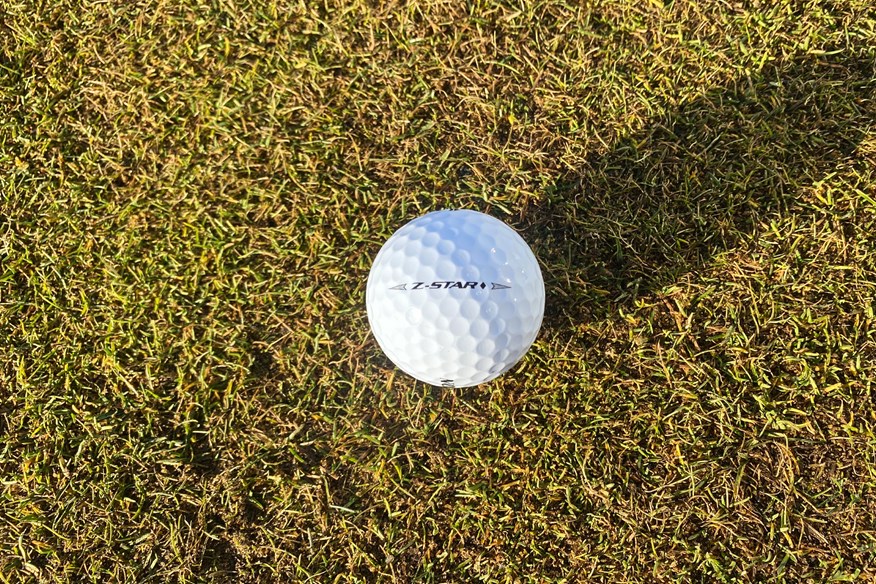
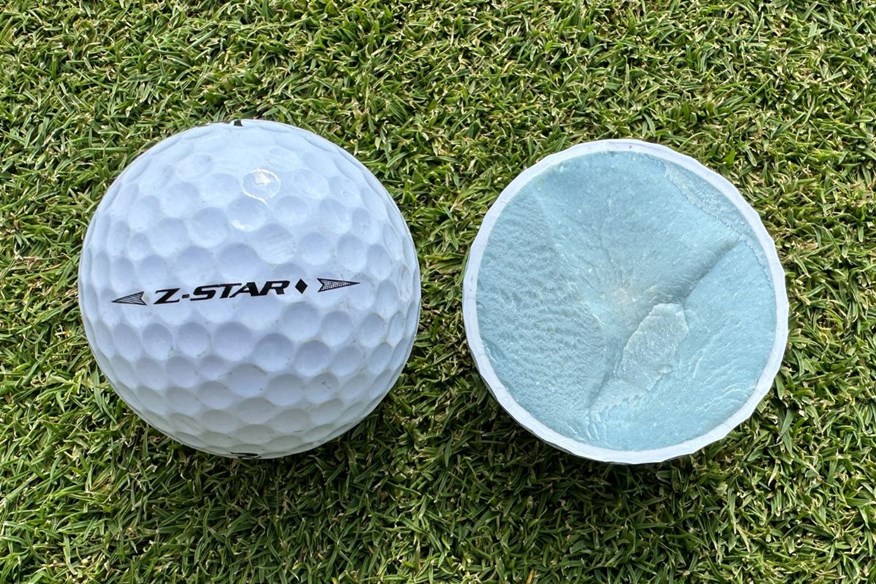
The Srixon Z-Star Diamond is one of the best high-spin golf balls. This golf ball was initially designed for Brooks Koepka, but it's become more popular among other Srixon staffers and amateur golfers. Based on our 2025 robot test results, it's clear to see why!
The Z-Star Diamond won an award in every category, barring one (off-the-tee performance), but where it did rank, it took the top spot. Let's have a quick run through the Z-Star Diamond's awards: gold medal for tee to green performance at 114mph, 93mph, and 78mph, gold medal for approach play, and gold medal for short-game performance.
Around the greens, the Z-Star Diamond is the best three-piece Tour-level golf ball you can play, and the second-best golf ball of all 62 tested, generating 6,137rpm backspin at the 40-yard pitch shot.
However, it's unlikely you'll miss the green in the first place! The Z-Star Diamond is the best golf ball for firing at pins. This golf ball ranks second for descent angle (45.3°), fourth for carry distance consistency, and third for backspin (5,149rpm - one of only three golf balls with over 5,000rpm). This is a recipe for success when you're attacking pins.
The Z-Star Diamond is a consistent golf ball off the tee at all three driver swing speeds. So, whether you swing like Koepka or not, this golf ball will deliver strong numbers for your swing speed. The Z-Star Diamond is above the test average for ball speed and carry distance at all three driver swing speeds.
This golf ball cleaned up in the three-piece Tour-level category! The Z-Star Diamond has to be on your mind if you're looking for a new golf ball.
On-course verdict
The Srixon Z-Star Diamond delivers the optimal performance out of the three golf balls in the 2025 Z-Star range.
The Z-Star Diamond is brilliant if you’re looking for one of the best high-spin golf balls because it’s very easy to generate spin with this model. That being said, it’s definitely lower-spinning off the tee than the previous generation.
I’ve tested a heap of outstanding Tour-level golf balls over the past couple of years, but I don’t think any have impressed me as much as the Z-Star Diamond on approach shots.
If you think a golf ball that travels far and spins high sounds right for your game, then you have to try the Z-Star Diamond, regardless of your ability.
I absolutely love how this golf ball feels off every club face in my bag. I wouldn’t necessarily say it’s particularly firmer than the Z-Star or Z-Star XV, but I think the feedback is much stronger. Thanks to the solid feedback, the response is very satisfying on well-struck shots, but not so much when the contact isn’t as good. However, I think that’s what makes a good golf ball.
Of all the golf balls I’ve played with over the past couple of seasons, this is without a doubt the best-performing golf ball from tee to green.
The Z-Star Diamond performs optimally in every area, which makes it extremely difficult to criticize. It feels great, feedback is amazing, and performance is extraordinary.
I don’t know what more a golf ball can offer!
Read our full Srixon Z-Star Diamond golf ball review.
Pros
- Amazing control from tee to green
- High spinning in the iron and short game
- Fantastic feedback and response
Cons
- High-spinning nature does slightly hinder distance
| Carry distance (yds) | Driver 114mph - 270.7 | Driver 93mph - 207.8 | Driver 78mph - 161 | 7-iron - 153.1 |
| Ball speed (mph) | Driver 114mph - 163.6 | Driver 93mph - 133.8 | Driver 78mph - 113.1 | 7-iron - 108.7 |
| Backspin (rpm) | Driver 114mph - 2,988 | Driver 93mph - 2,838 | Driver 78mph - 2,719 | 7-iron - 5,149 | Pitch - 6,137 |
| Launch angle (°) | Driver 114mph - 11.2 | Driver 93mph - 12.5 | Driver 78mph - 13.6 | 7-iron - 20.5 | Pitch - 30 |
| Descent angle (°) | Driver 114mph - 39.4 | Driver 93mph - 32.6 | Driver 78mph - 28.1 | 7-iron - 45.3 | Pitch - 35.1 |
| Peak height (yds) | Driver 114mph - 34.5 | Driver 93mph - 22.4 | Driver 78mph - 15.7 | 7-iron - 29.3 | Pitch - 6.5 |
| Compression (psi) | 106 |
- Speed dimple pattern
- Thin premium Biomass cover
- Spin skin+ coating
- Fastlayer DG core 2.0
- 338 dimples
- 3-Piece construction
- Available in white and yellow
Silver medal for tee to green performance at 78mph and approach play performance
Srixon's Z-Star line-up has blown the three-piece Tour-level competition away. Granted, much of that is thanks to the Z-Star Diamond, but the Srixon Z-Star also contributed with a silver medal for tee to green performance at 78mph and approach play performance.
The Z-Star is right there with the Z-Star Diamond for approach play performance, but it sadly just misses out on top spot and has to settle for second-best out of all 62 golf balls tested. The Z-Star ranks fourth for descent angle (45.3°), fifth for carry distance consistency, and fifth for backspin (4,937rpm).
Being a lower-spinning golf ball than the Z-Star Diamond, it's hardly surprising to see the Z-Star rank lower in short-game performance. The Z-Star is the sixth-highest spinning three-piece Tour-level golf ball at the 40-yard pitch shot - firmly above the test average with 5,926rpm.
With a silver medal for tee to green performance at 78mph, the Z-Star performs best at slower swing speeds, ranking fifth overall. At more moderate and quicker swing speeds, the Z-Star isn't as strong off the tee, and that's perhaps why it's not as popular on Tour as Z-Star Diamond or Z-Star XV.
That being said, Z-Star is a golf ball for slower swing speed players to consider, especially if you want a golf ball you can trust when playing from the fairway.
On-course verdict
The Z-Star is my least-favored golf ball in Srixon's Z-Star range, but that's not to say it will be for everyone. For my game, it doesn't perform as well from tee to green as the Diamond or XV.
This is noticeably softer than the Diamond and XV, which I think makes it less responsive, and it dampens the feedback.
On the whole, all three Z-Star golf balls are very closely matched, but on the course, I can definitely tell this golf ball isn't right for me off the tee because it doesn't spin enough. For some golfers, that will be a plus, but for my game, I require a higher-spinning model.
The Z-Star has the lowest compression rating of the three models in Srixon's Z-Star range, and for that reason, it works best for golfers with slower swing speeds because it's easier to eke out its performance. If you swing the club too quickly, you go beyond the threshold of optimal performance.
Pros
- Amazing tee to green performance
- Premium option for golfers with slower swing speeds
- Very soft feel
Cons
- Doesn't perform as well at quicker swing speeds
| Carry distance (yds) | Driver 114mph - 269.4 | Driver 93mph - 206.6 | Driver 78mph - 161.1 | 7-iron - 154.1 |
| Ball speed (mph) | Driver 114mph - 162.7 | Driver 93mph - 133.1 | Driver 78mph - 113.1 | 7-iron - 108.7 |
| Backspin (rpm) | Driver 114mph - 2,900 | Driver 93mph - 2,859 | Driver 78mph - 2,693 | 7-iron - 4,937 | Pitch - 5,926 |
| Launch angle (°) | Driver 114mph - 11.1 | Driver 93mph - 12.6 | Driver 78mph - 13.7 | 7-iron - 20.8 | Pitch - 30.6 |
| Descent angle (°) | Driver 114mph - 38.5 | Driver 93mph - 32.8 | Driver 78mph - 28.1 | 7-iron - 45.3 | Pitch - 35.9 |
| Peak height (yds) | Driver 114mph - 33.3 | Driver 93mph - 22.4 | Driver 78mph - 15.8 | 7-iron - 29.5 | Pitch - 6.9 |
| Compression (psi) | 92 |
- Speed dimple pattern
- Thin premium Biomass cover
- Spin skin+ coating
- Fastlayer DG core 2.0
- 338 dimples
- 3-Piece construction
- Available in white and yellow
- An alternative model is the Divide
Golf medal for approach play and short game performance
Highest-spinning golf ball for approach play


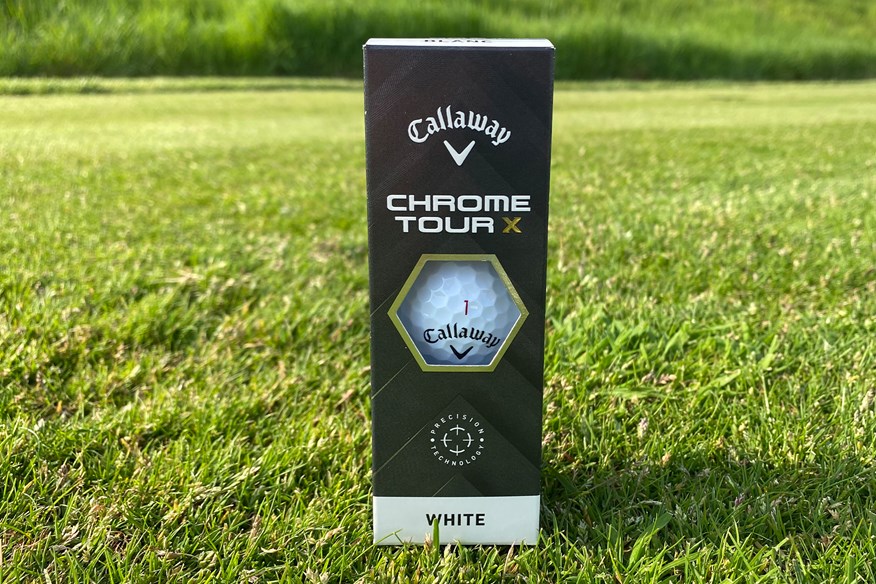

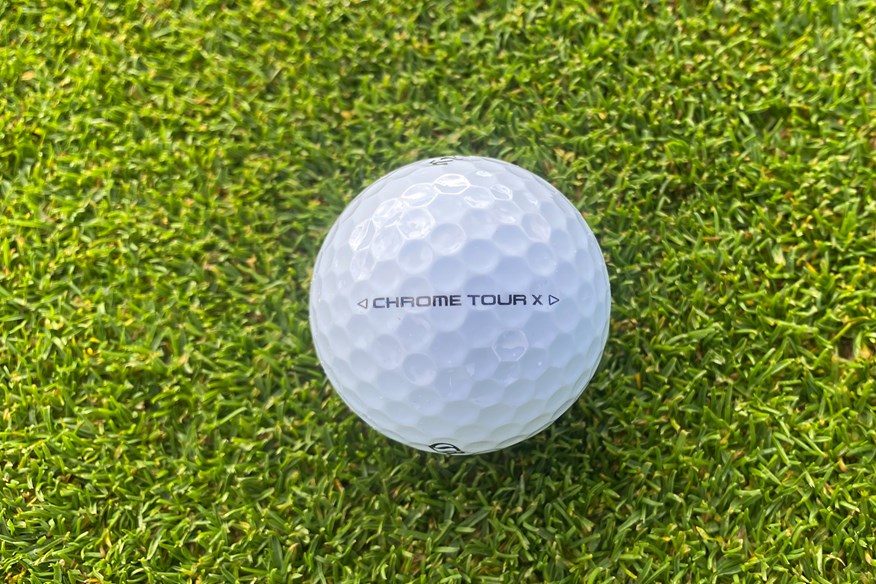
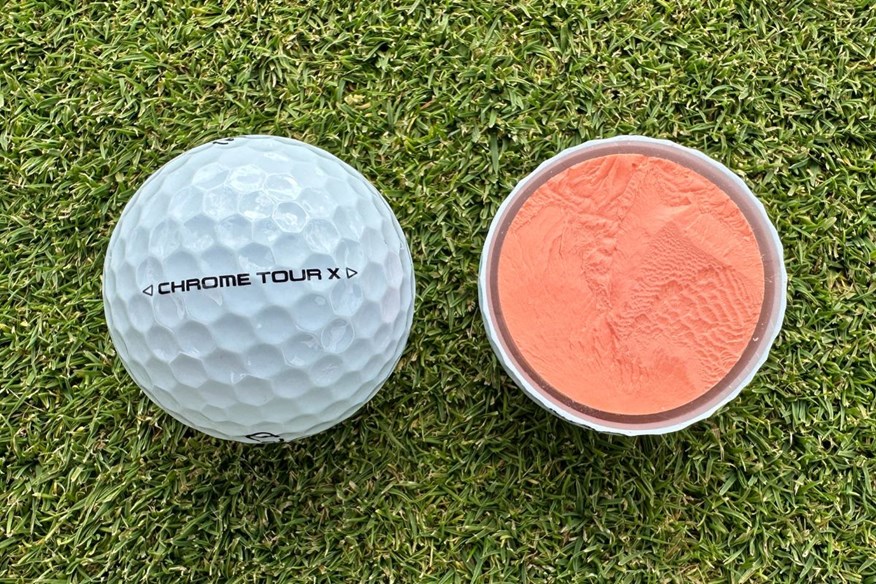
Every golfer wants a golf ball that stops on a dime when playing around the greens because it makes getting up and down so much easier. The golf ball that's going to help you out most around the greens is the Callaway Chrome Tour X.
Of all 62 golf balls tested, the Chrome Tour X is the highest-spinning golf ball around the green. This golf ball was able to generate 6,343rpm, the nearest in this category is the TaylorMade TP5 (6,100), and the second-highest spinning in the test is the Srixon Z-Star Diamond (6,137).
The high-spin nature of the Chrome Tour X does continue through the bag, which isn't an issue when approaching greens. As well as being awarded the gold medal for short game performance, the Chrome Tour X also finished first for approach play.
With the 7-iron shot, this is the highest-spinning golf ball in the test with 5,242rpm. Over 400 revs higher than the second-highest-spinning golf ball in this category (TaylorMade TP5 - 4,823).
The only issue with such a high-spinning golf ball is it hinders distance, so if you prioritise distance over spin, the Chrome Tour is a better option. However, if you want more control and spin, the Chrome Tour X has to be at the top of your list.
Off the tee, you aren't losing much distance with the Chrome Tour X, and at 93mph, this is the second-best four-piece and five-piece golf ball from tee to green.
On-course verdict
Callaway have absolutely smashed it out of the park this year with their four-piece Chrome Tour, Chrome Tour X, and Chrome Tour Triple Diamond golf balls.
Other than having major shelf appeal, the Chrome Tour X is premium for multiple reasons. One of which is that it's widely used by Tour players, and another is that it's a really solid performer from tee to green.
Off the tee, the Chrome Tour X is the highest-spinning Chrome Tour model, which won’t be to everyone’s liking, but for those who struggle to generate height and potentially lose the ball left, then the Chrome Tour X is well worth considering.
The Chrome Tour X spins on command. Playing into and around greens is extremely fun and simple because you can throw this ball at the pin and it will stop.
If you want a golf ball that spins high and is easy to control, there isn't a better option out there.
Read our full Callaway Chrome Tour X golf ball review.
Pros
- Extremely high spin and control when approaching the greens
- Produces brilliant ball speeds and distance
- Played by some of the best players in the world across numerous Tours
Cons
- Callaway's highest-spinning premium golf ball might not be what every golfer needs
| Carry distance (yds) | Driver 114mph - 269.7 | Driver 93mph - 208.9 | Driver 78mph - 160.8 | 7-iron - 156.1 |
| Ball speed (mph) | Driver 114mph - 163.6 | Driver 93mph - 134.3 | Driver 78mph - 113 | 7-iron - 108.7 |
| Backspin (rpm) | Driver 114mph - 2,997 | Driver 93mph - 3,048 | Driver 78mph - 2,921 | 7-iron - 5,242 | Pitch - 6,343 |
| Launch angle (°) | Driver 114mph - 10.8 | Driver 93mph - 12.5 | Driver 78mph - 13.5 | 7-iron - 20.3 | Pitch - 29.5 |
| Descent angle (°) | Driver 114mph - 38.7 | Driver 93mph - 34 | Driver 78mph - 28.8 | 7-iron - 45.3 | Pitch - 34.4 |
| Peak height (yds) | Driver 114mph - 33.3 | Driver 93mph - 23.4 | Driver 78mph - 16 | 7-iron - 29.1 | Pitch - 6.3 |
| Compression (psi) | 111 |
- Hyper fast soft core
- Seamless Tour aero
- High-performance Tour urethane soft cover
- 332 dimples
- 4-Piece construction
- Available in white and yellow
- Alternative models include Triple Track, 360° Triple Track, TruTrack, and Limited Edition patterns
Silver medal for tee to green performance at 114mph
The Srixon Z-Star XV is the distance-oriented model in Srixon's Z-Star line-up, and it's the ball of choice for 2019 Champion Golfer Shane Lowry, 2021 Masters Champion Hideki Matsuyama, and Austria's only PGA Tour winner, Sepp Straka.
Despite being the supposed longest golf ball in the Z-Star range, the Z-Star XV isn't as long as the Z-Star Diamond at any of the three driver swing speeds tested. That being said, at 114mph, it's very close.
Add in the impressive approach play performance, and there's no surprise this golf ball won the silver medal for tee to green performance at the quick swing speed. The Z-Star XV ranked third for approach play in the entire test - sadly, behind the Z-Star and Z-Star Diamond.
The Z-Star XV is said to be the lowest-spinning Z-Star model, but even around the greens, it's slightly ahead of the Z-Star (albeit by 22rpm). The Z-Star XV might sound as though it's living in the shadow of the Z-Star and Z-Star Diamond. However, there's clearly a reason why it's so popular on Tour.
As well as being the second-best three-piece Tour-level golf ball for tee to green performance at 114mph, the Z-Star XV also won bronze for tee to green performance at 78mph, and bronze for approach play.
There's a lot to love about the Z-Star XV, and like the other two models in the Z-Star line-up, this is a brilliant golf ball for attacking pins with. It's incredibly versatile across all three swing speeds, and it puts itself in the conversation with the Z-Star and Z-Star Diamond.
On-course verdict
The Z-Star XV is incredibly popular on Tour, and it's easy to see why after just a couple of holes. This golf ball delivers great performance in every area with an emphasis on distance.
I can't say for sure whether I noticed considerably more distance over other golf balls in Srixon's Z-Star range, but it's definitely competitive.
The Z-Star XV is designed to be the lowest-spinning golf ball in the Z-Star line-up, but it's far from low-spinning. On the course, this ball stops very quickly when approaching and playing around greens - as you'd expect for a Tour-level golf ball.
I find the XV to have a slightly softer feel than the Z-Star Diamond, and for that reason, I don't think it's as responsive, but the feeling itself is very pleasant.
As I've already mentioned, this is a very popular Srixon golf ball on Tour, and it doesn't take long to realise why when you play with it on the golf course.
Pros
- Impressive tee to green performance
- Good Tour representation
- Great feel
Cons
- Lower-spinning than the Z-Star Diamond
| Carry distance (yds) | Driver 114mph - 270.6 | Driver 93mph - 207.7 | Driver 78mph - 160.8 | 7-iron - 154.2 |
| Ball speed (mph) | Driver 114mph - 163.4 | Driver 93mph - 133.6 | Driver 78mph - 113.2 | 7-iron - 108.7 |
| Backspin (rpm) | Driver 114mph - 2,936 | Driver 93mph - 2,857 | Driver 78mph - 2,654 | 7-iron - 4,930 | Pitch - 5,948 |
| Launch angle (°) | Driver 114mph - 11.2 | Driver 93mph - 12.6 | Driver 78mph - 13.8 | 7-iron - 20.7 | Pitch - 30.3 |
| Descent angle (°) | Driver 114mph - 39 | Driver 93mph - 32.9 | Driver 78mph - 27.6 | 7-iron - 45.2 | Pitch - 35.6 |
| Peak height (yds) | Driver 114mph - 34 | Driver 93mph - 22.6 | Driver 78mph - 15.5 | 7-iron - 29.3 | Pitch - 6.7 |
| Compression (psi) | 112 |
- Speed dimple pattern
- Thin premium Biomass cover
- Spin skin+ coating
- Fastlayer DG core 2.0
- 338 dimples
- 3-Piece construction
- Available in white and yellow
Silver medal for short game performance
Best Bridgestone golf ball for approach play
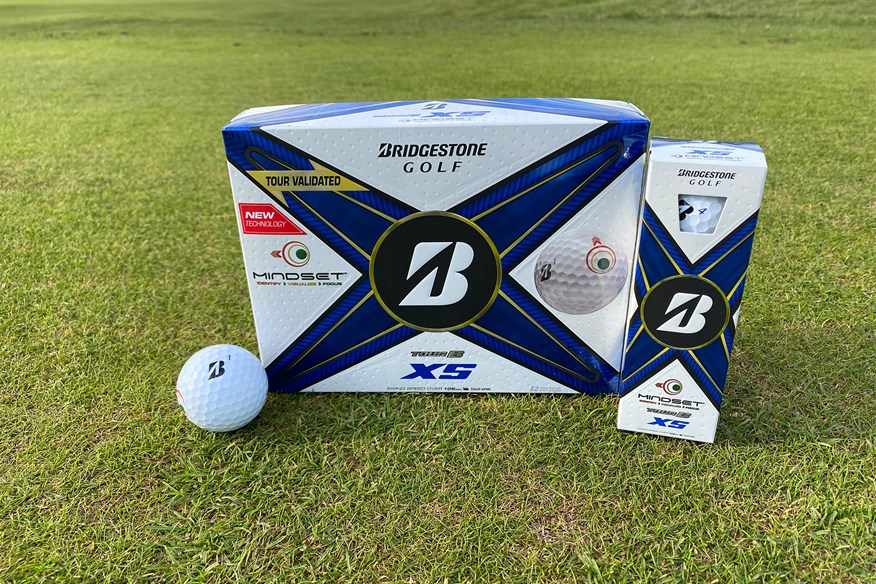

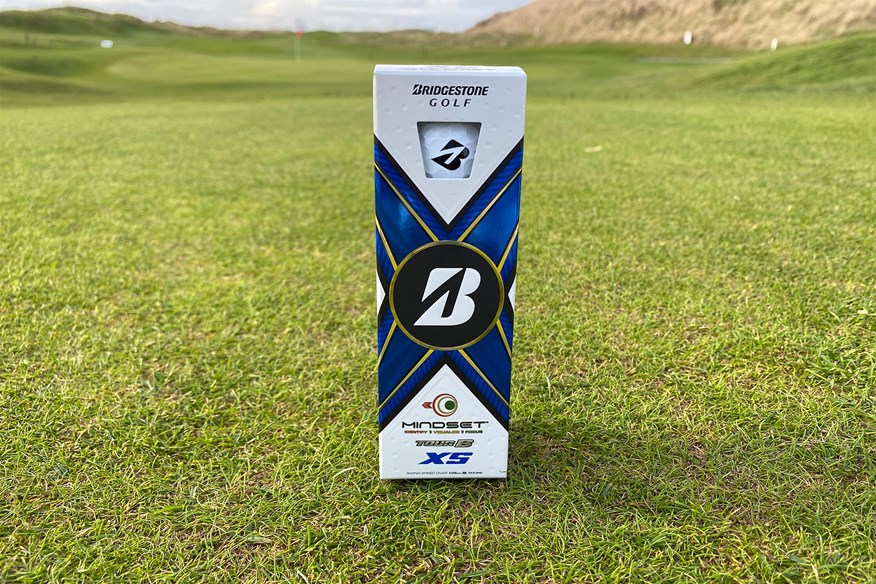
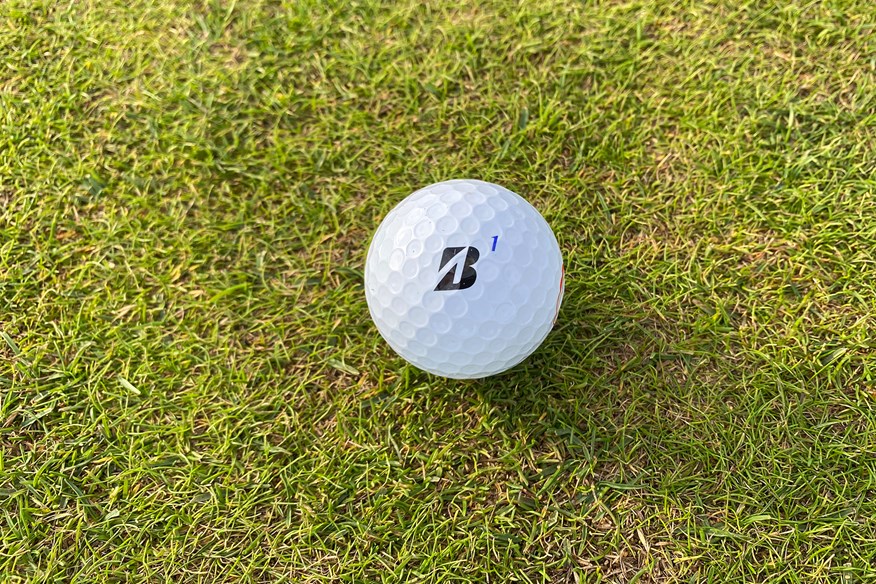
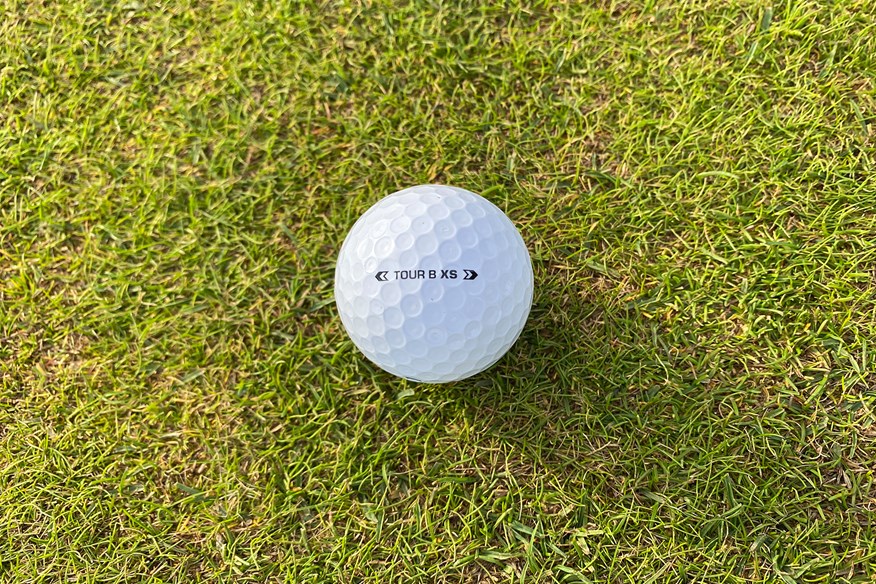
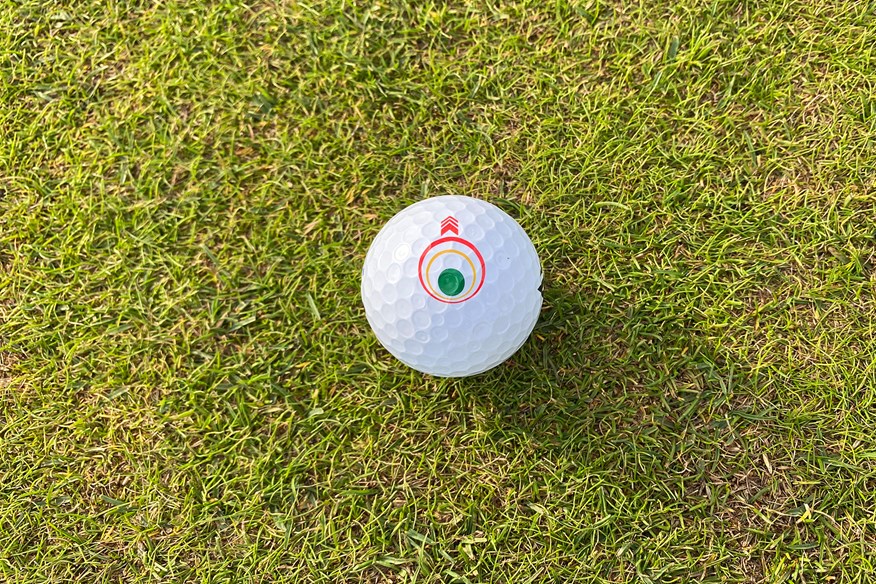
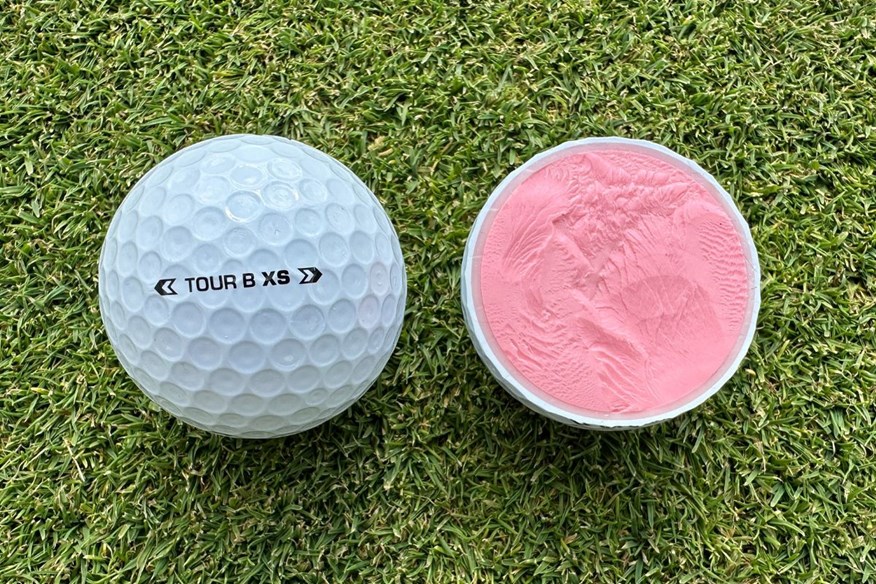
Bridgestone's Tour B XS is designed to spin higher than the Tour B X and produce a softer feeling. While our robot can't comment on the feel of this golf ball, it can tell us if it is, in fact, higher-spinning than its firmer counterpart.
Winning the silver medal for short game performance, the Tour B XS is higher-spinning around the greens than the Tour B X (6,036rpm vs. 5,972rpm). It's not drastically higher spinning, but you can expect more grab and control.
That transfers into approach play. Within the three-piece Tour-level category, the Tour B XS is the highest-spinning golf ball with over 5,000 rpm - one of only two (5,170). It's also the second-highest-spinning golf ball in the entire test.
Unfortunately, due to the dominance of the Z-Star range, the Tour B XS just misses out on a podium place for approach play performance.
Off the tee, the high-spinning nature of the Tour B XS really hurts its overall performance. At all three driver swing speeds, it ranks low, being the highest-spinning model at 78mph (second overall) and 93mph (first overall), and the second-highest-spinning golf ball at 114mph (third overall).
There'll be a lot of people put off by how much the Tour B XS spins, and it's a big reason why Tiger Woods switched to the Tour B X. However, if you struggle to generate spin, the Tour B XS is a golf ball you should definitely consider. I love it for that exact reason, and while it might not go as far off the tee, it makes up for the reduced distance by offering amazing spin and control.
On-course verdict
The Tour B XS isn’t a model found on Tour; the Tour B X is a much more popular model among the pros. For a golfer who’s looking for a soft-feeling golf ball that easily generates spin and has a driver swing speed north of 105mph, the Tour B XS is definitely a model to consider.
Some golf balls are able to work for a wide range of golfers. However, I wouldn’t say that’s the case with the Tour B XS.
As a golfer who needs help adding spin and height off the tee, the Tour B XS is a brilliant golf ball for me. I feel as though from tee to green, this ball performs incredibly well and delivers everything I need and want from a golf ball.
The Tour B XS is a soft-feeling golf ball, which I’m not normally a fan of, but I am with the Tour B XS because it’s very responsive. I think you get a lot of feedback from every shot you play with the Tour B XS.
Read our full Bridgestone Tour B XS golf ball review.
Pros
- Incredible feel and response from every shot
- Amazing spin and control around the green
- Mindset is a brilliant tool
Cons
- Not the most versatile model
| Carry distance (yds) | Driver 114mph - 268.4 | Driver 93mph - 206.7 | Driver 78mph - 160.5 | 7-iron - 153.5 |
| Ball speed (mph) | Driver 114mph - 162.7 | Driver 93mph - 133.6 | Driver 78mph - 112.8 | 7-iron - 109 |
| Backspin (rpm) | Driver 114mph - 2,964 | Driver 93mph - 3,059 | Driver 78mph - 2,795 | 7-iron - 5,170 | Pitch - 6,036 |
| Launch angle (°) | Driver 114mph - 11 | Driver 93mph - 12.3 | Driver 78mph - 13.7 | 7-iron - 20.3 | Pitch - 30 |
| Descent angle (°) | Driver 114mph - 38.6 | Driver 93mph - 33.6 | Driver 78mph - 28.4 | 7-iron - 45.2 | Pitch - 35.3 |
| Peak height (yds) | Driver 114mph - 33.1 | Driver 93mph - 22.8 | Driver 78mph - 15.8 | 7-iron - 29.1 | Pitch - 6.7 |
| Compression (psi) | 99 |
- REACTIV X System
- REACTIV iQ Smart Cover Technology
- XCLRNT mid-layer
- Gradational Core
- Dual Dimple
- Seamless Cover
- 330 dimples
- 3-Piece construction
- Available in white and yellow
- An alternative model is the Mindset
Gold medal for tee to green performance at 114mph
The Wilson Staff Model is a very impressive golf ball that unfortunately sits in the shadow of the Staff Model X. That might sound harsh, considering this is the best golf ball for tee to green performance at 114mph in this category.
At the 114mph driver swing speed, this is the third-longest golf ball, and one of only three to exceed 274 yards in the entire test. At a moderate and slower swing speed, the Staff Model is a solid performer, but not as strong as the Staff Model X - third at 93mph and second at 78mph.
There is one area where the Staff Model outshines the Staff Model X, and that's with approach play. Staff Model scooped up the silver medal for approach play with the Staff Model X, one place behind in the bronze medal position.
Approaching and playing around the greens, the Staff Model doesn't generate as much spin as the Staff Model X, but its distance is more consistent. Despite being a lower-spinning golf ball, you might be able to trust the Staff Model more to carry a repeatable distance - even if it is shorter.
At quick swing speeds, this is definitely a good option if you want a golf ball that can do everything, but with the Staff Model X just behind at 114mph for tee to green performance, and given how it's better-performing almost everywhere else, it's hard not to recommend Staff Model X instead.
That being said, the best way to differentiate is if you want a lower-spinning, softer golf ball, go for the Staff Model.
On-course verdict
The Staff Model is a very strong performer from tee to green. If you don't want a high-spinning, firm-feeling golf ball, this is your best option. This model isn't as impressive as the Staff Model X, but it's pretty darn close.
From tee to green, the Staff Model is super consistent, and it ticks a lot of boxes for the majority of golfers. Regardless of your ability or swing speed, the Staff Model will work for you if you want a golf ball that's easy to control when playing into and around greens and competitive for distance off the tee.
There's a ton to like about the Staff Model, and its softer feel compared to the Staff Model X is sure to please a lot of golfers.
Read our full Wilson Staff Model golf ball review.
Pros
- Incredible distance off the tee
- Amazing short game performance
- Softer feel will be appreciated by many golfers
Cons
- Overall performance is just below that of the Staff Model X
| Carry distance (yds) | Driver 114mph - 274.3 | Driver 93mph - 209.2 | Driver 78mph - 161.7 | 7-iron - 156.3 |
| Ball speed (mph) | Driver 114mph - 164.7 | Driver 93mph - 134 | Driver 78mph - 113.3 | 7-iron - 109 |
| Backspin (rpm) | Driver 114mph - 2,829 | Driver 93mph - 2,703 | Driver 78mph - 2,595 | 7-iron - 4,653 | Pitch - 5,993 |
| Launch angle (°) | Driver 114mph - 11.2 | Driver 93mph - 12.8 | Driver 78mph - 13.9 | 7-iron - 21.1 | Pitch - 30.6 |
| Descent angle (°) | Driver 114mph - 38.6 | Driver 93mph - 32.4 | Driver 78mph - 28 | 7-iron - 45.2 | Pitch - 35.8 |
| Peak height (yds) | Driver 114mph - 34.1 | Driver 93mph - 22.5 | Driver 78mph - 15.8 | 7-iron - 29.8 | Pitch - 6.8 |
| Compression (psi) | 112 |
- V-Cor advanced performance
- Medium compression core with velocity-boosting additive
- 3SIX2 seamless urethane cover
- 362 dimples
- 4-Piece construction
- Available in white and yellow
The most dominant Tour-level golf ball
Fastest golf ball for approach play
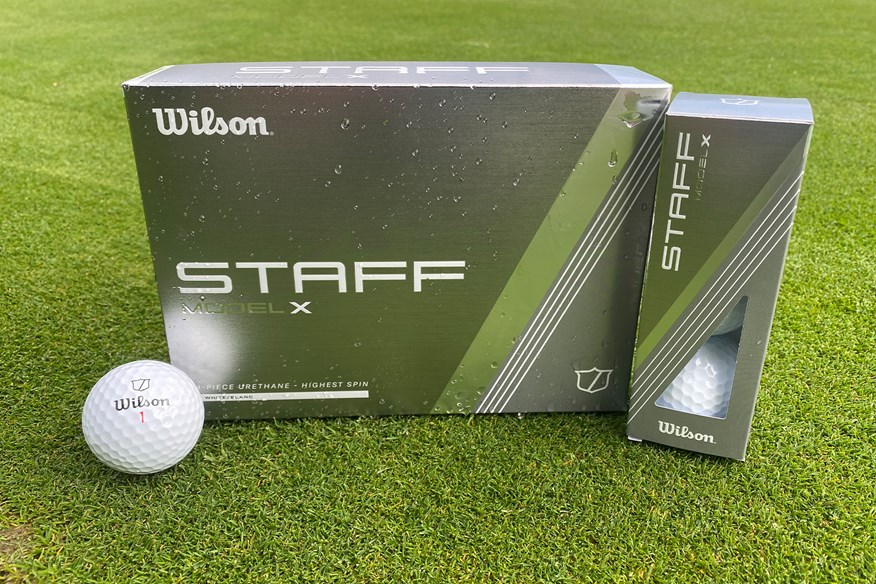

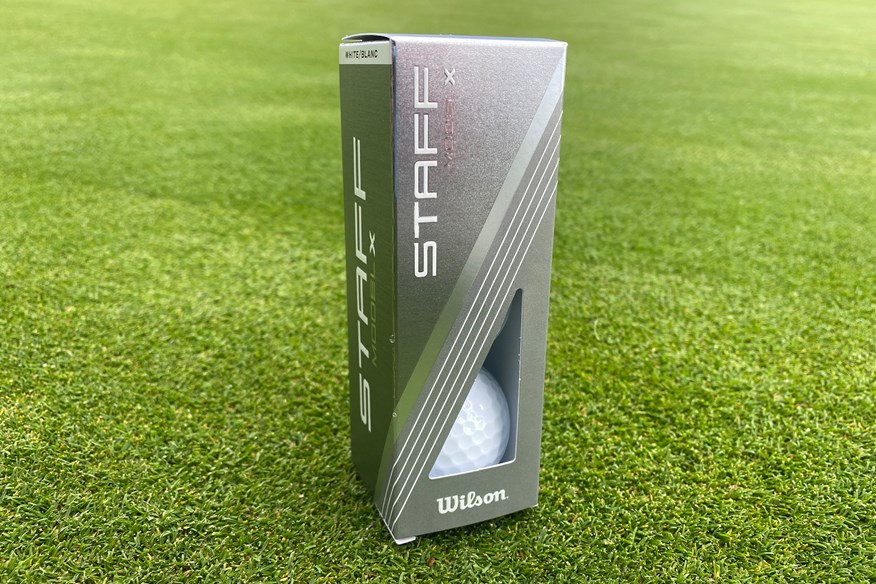
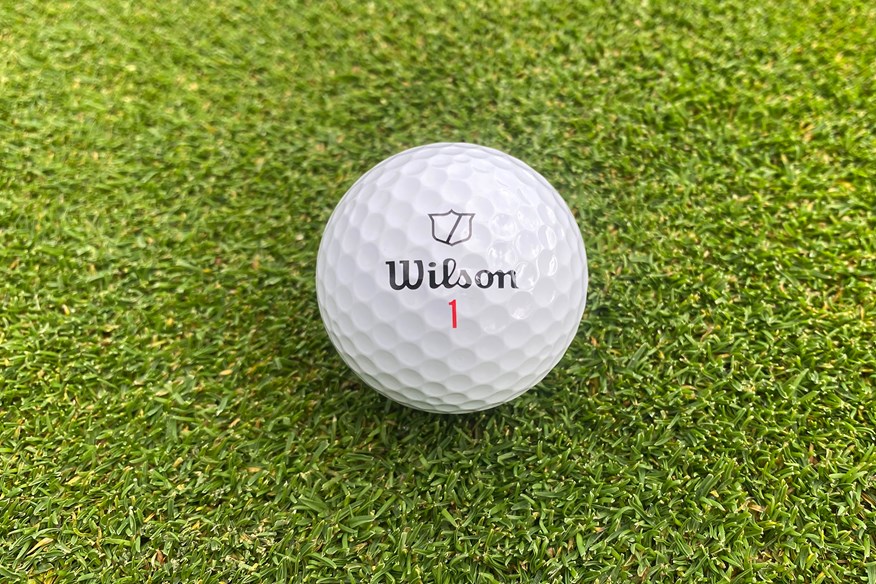
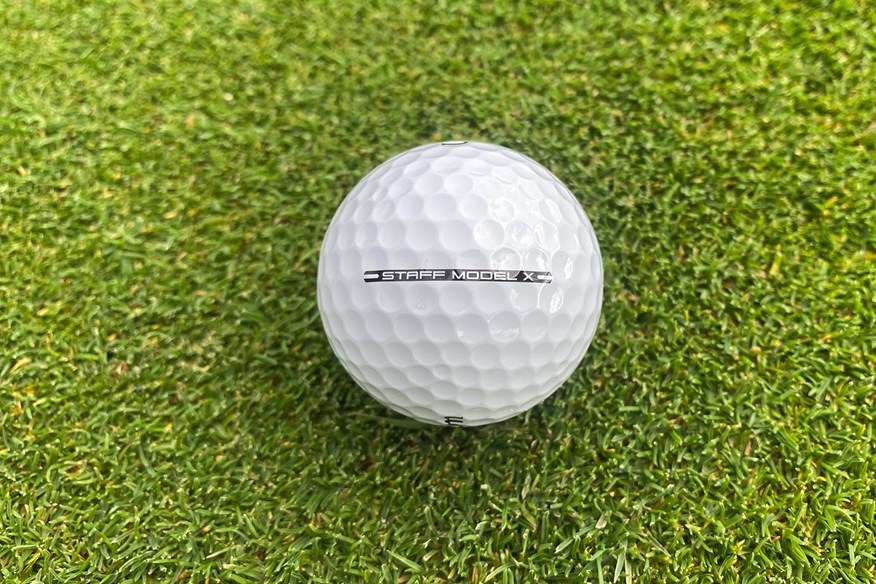

This is arguably the best golf ball in the game. The Wilson Staff Model X is the golf medal winner for tee to green performance at 93mph and 78mph, silver medal winner for tee to green performance at 114mph, silver medal winner for off-the-tee performance, and bronze medal winner for approach play and short game spin.
No other golf ball in our test has received as many awards as the Staff Model X. It's the only golf ball to have received an award in every category.
Staff Model X isn't the longest or fastest golf ball at any of the three driver swing speeds we tested, but it's consistently towards the top of the rankings. It's a higher-spinning golf ball compared to the Staff Model, and that is highlighted with its approach play and short game performance.
This golf ball lands with the steepest descent angle of all 62 tested (45.4°), which helps it easily hit and hold greens. Pair that with the fourth-highest backspin (4,782rpm) and you have a recipe for success.
With the 40-yard pitch shot, Staff Model X generated the third-highest spin (6,091) and again, a steep descent angle (35.5°), meaning this golf ball will stop very quickly when playing around the greens.
On-course verdict
Since being released at the start of 2024, the Staff Model X has been one of my favorite golf balls to play with over the past couple of years. I have a ton of confidence in this model whenever I put it in play. It has become a go-to golf ball for me when I'm not playing my best golf because I know I can trust it to perform well and true.
With its firm feel, it may not appeal to every golfer, but this makes the ball extremely responsive, providing brilliant feedback on all shots. The firm feel is noticeable, compared to softer golf balls, but after a couple of rounds, you practically forget it's a firm golf ball.
Off the tee, the Staff Model X offers slightly more spin than the Staff Model, but that doesn't hinder its overall carry distance. The higher-spinning nature of this model means greenside spin and control is very strong.
The Wilson Staff Model X is the full package. If you're shopping for a premium Tour-level golf ball, this is the No.1 option for golfers of all abilities to consider.
Read our full Wilson Staff Model X golf ball review.
Pros
- Extremely responsive thanks to the firm-feeling
- Performs highly for golfers of all abilities
- Amazing short-game spin and control
Cons
- Higher-spinning than the Staff Model off the tee
| Carry distance (yds) | Driver 114mph - 273.7 | Driver 93mph - 209.8 | Driver 78mph - 162.2 | 7-iron - 156.1 |
| Ball speed (mph) | Driver 114mph - 164.3 | Driver 93mph - 134.6 | Driver 78mph - 113.4 | 7-iron - 109.3 |
| Backspin (rpm) | Driver 114mph - 2,797 | Driver 93mph - 2,792 | Driver 78mph - 2,623 | 7-iron - 4,782 | Pitch - 6,091 |
| Launch angle (°) | Driver 114mph - 11.2 | Driver 93mph - 12.5 | Driver 78mph - 13.8 | 7-iron - 21 | Pitch - 30.4 |
| Descent angle (°) | Driver 114mph - 38.4 | Driver 93mph - 32.6 | Driver 78mph - 28.1 | 7-iron - 45.4 | Pitch - 35.5 |
| Peak height (yds) | Driver 114mph - 33.7 | Driver 93mph - 22.6 | Driver 78mph - 15.9 | 7-iron - 30 | Pitch - 6.7 |
| Compression (psi) | 114 |
- V-Cor advanced performance
- Firm compression core with velocity-boosting additive
- 3SIX2 seamless urethane cover
- 362 dimples
- 4-Piece construction
- Available in white and yellow
Gold medal for tee to green performance at 93mph and approach play performance
Best three-piece club golfer model for approach play
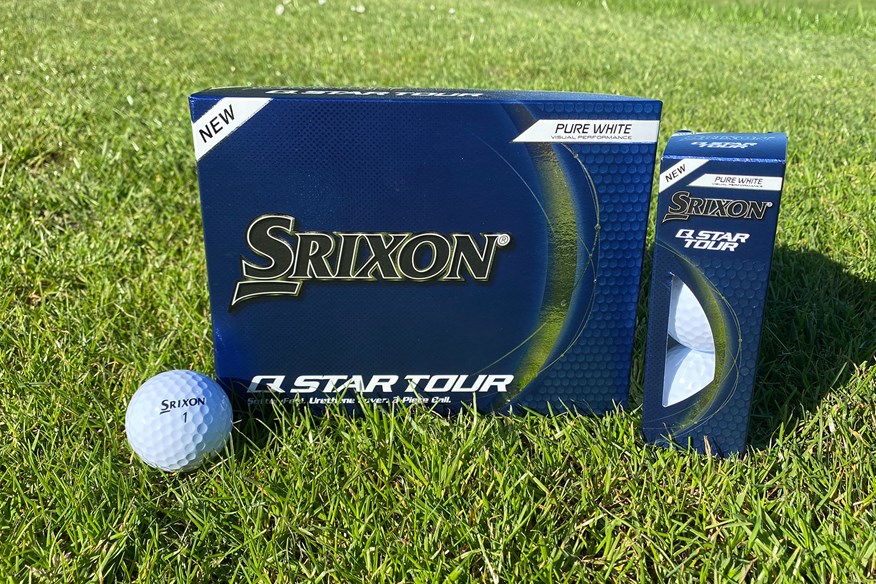

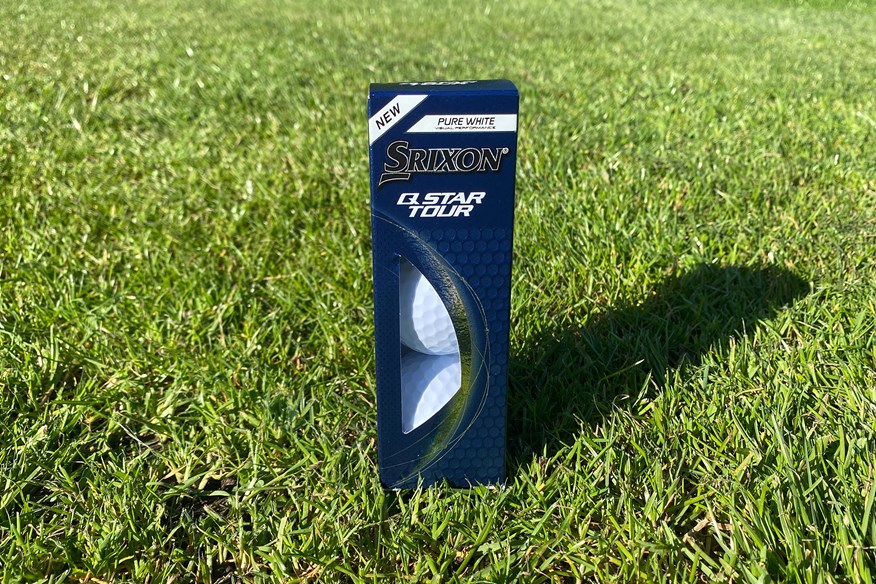
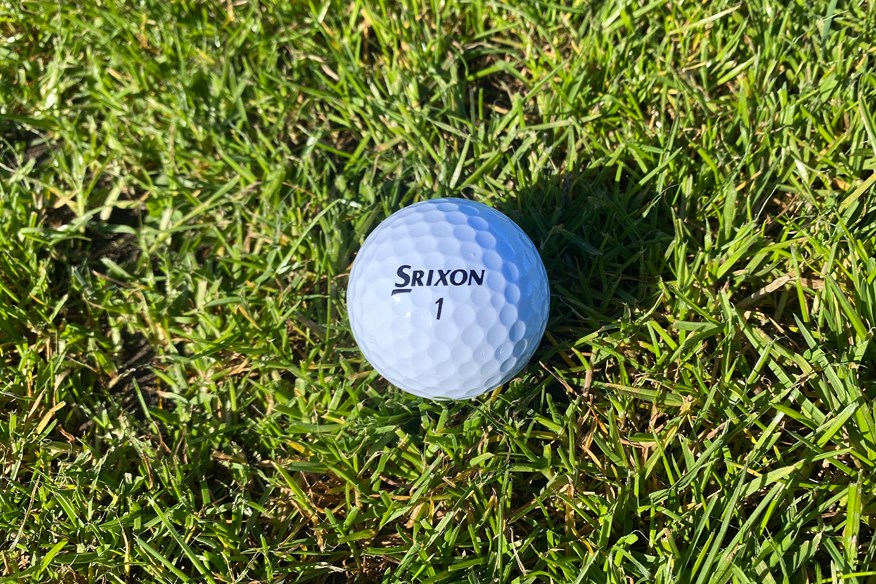
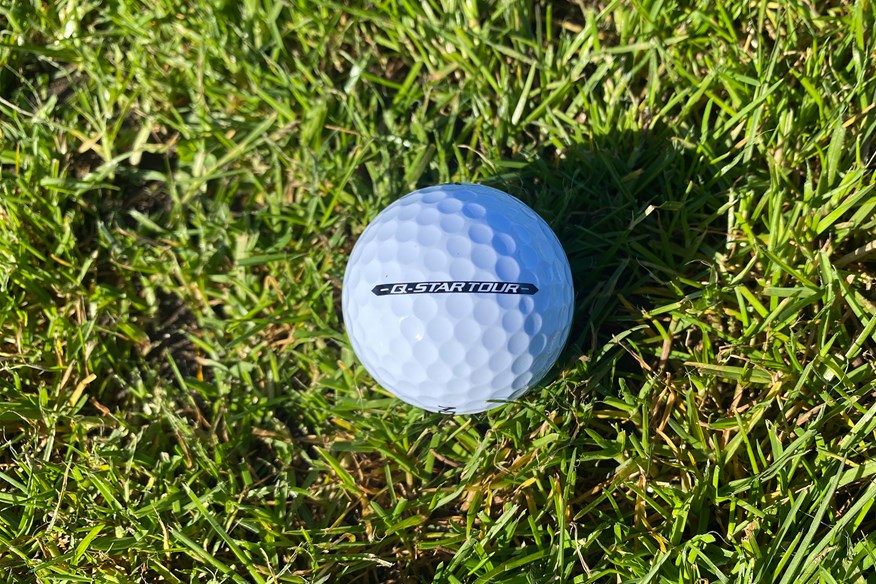
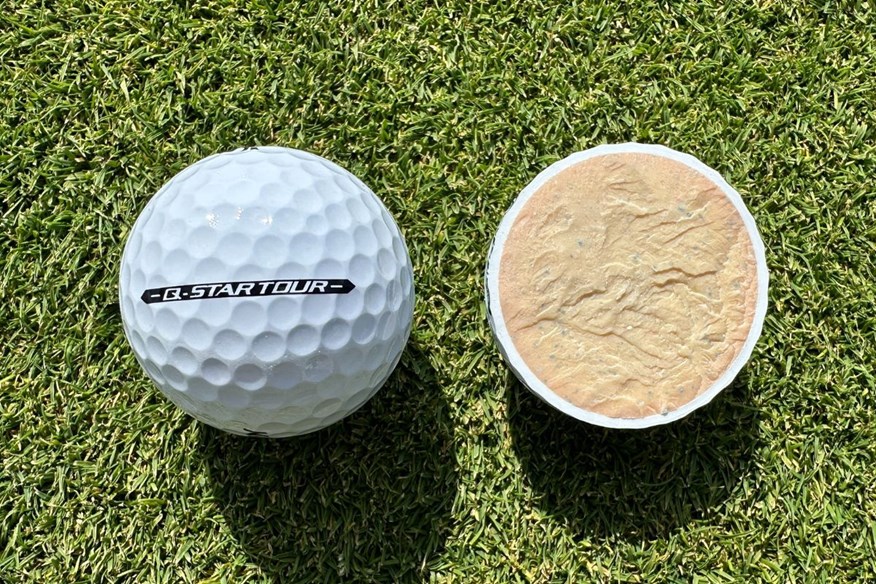
The Q-Star Tour is Srixon's bridging golf ball between the two-piece Q-Star and the three-piece Tour-level Z-Star series. The Q-star Tour features plenty of technology found in the Z-Star golf balls, but it just doesn't perform as well.
You'd probably expect that, given it's a cheaper model than all three Z-Star golf balls, but against other three-piece club golfer models, the Q-Star Tour is a brilliant option. This golf ball performs very well in its approach play, ranking best of all golf balls in this category, thanks to its steep descent angle (45°), impressive backspin (4,568), and incredible carry distance consistency - ranking 2nd overall.
The Q-Star Tour is the gold medal winner for approach play performance, and with how strong it is in the 7-iron shot, it helped it achieve the gold medal for tee to green performance at 93mph, and the silver medal at 114mph and 78mph.
You won't be blown away by the Q-Star Tour's performance off the tee, but it's strong enough to make this the overall best three-piece club golfer model for tee to green performance at all three swing speeds.
On-course verdict
The Q-star Tour is very easy to enjoy because it contains some technology found in the premium Z-Star range, but it's a fraction of the price.
Obviously, the Q-Star Tour's performance isn't as high as the three Z-Star golf balls, but it's a very strong performer for mid-handicappers wanting a solid golf ball from tee to green.
Someone I play golf with regularly often switches to the Q-Star Tour because of the fact you're getting close to premium performance, and it's not as gut-wrenching if you lose one.
If you're looking for distance, the Q-Star Tour might not be your first choice, but for control and spin, it's a very good option. What you lose in distance off the tee is definitely made up for with what you gain in spin and control when approaching greens.
Read our full Srixon Q-Star Tour golf ball review.
Pros
- Good performance from tee to green
- Impressive feel from every club in the bag
- Wind doesn't massively hamper distance
Cons
- Distance isn't its strong suit
| Carry distance (yds) | Driver 114mph - 267.4 | Driver 93mph - 205.5 | Driver 78mph - 160.5 | 7-iron - 155.6 |
| Ball speed (mph) | Driver 114mph - 161.8 | Driver 93mph - 132.6 | Driver 78mph - 112.8 | 7-iron - 108.4 |
| Backspin (rpm) | Driver 114mph - 2,828 | Driver 93mph - 2,720 | Driver 78mph - 2,428 | 7-iron - 4,568 | Pitch - 5,575 |
| Launch angle (°) | Driver 114mph - 11 | Driver 93mph - 12.7 | Driver 78mph - 14 | 7-iron - 21.2 | Pitch - 31.5 |
| Descent angle (°) | Driver 114mph - 37.4 | Driver 93mph - 31.9 | Driver 78mph - 27.4 | 7-iron - 45 | Pitch - 37.2 |
| Peak height (yds) | Driver 114mph - 31.9 | Driver 93mph - 21.8 | Driver 78mph - 15.5 | 7-iron - 29.5 | Pitch - 7.3 |
| Compression (psi) | 76 |
- FastLayer core
- Spin Skin coating
- Ultra-thin urethane cover
- Speed dimple pattern
- 338 dimples
- 3-Piece construction
- Available in white and yellow
- An alternative model is the Divide
Bronze medal for tee to green performance at 114mph
Best Titleist golf ball for approach play
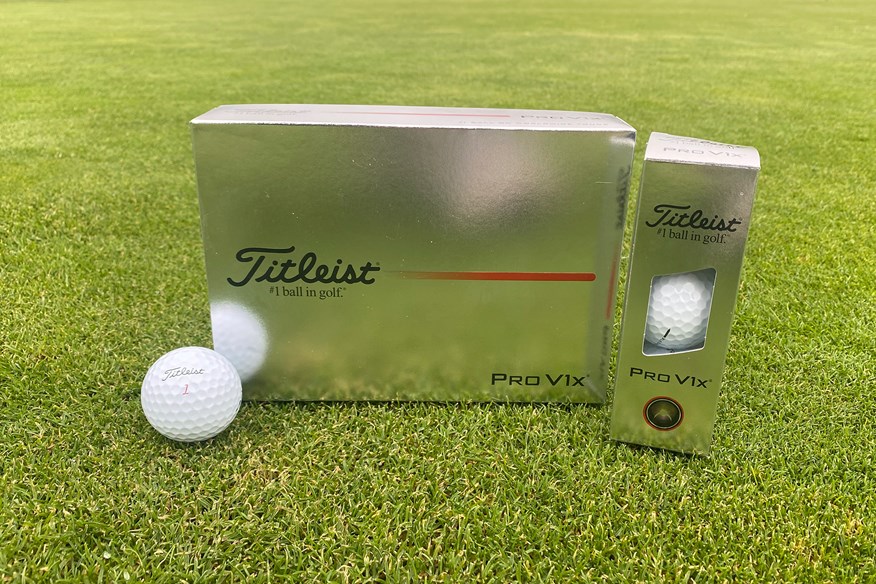

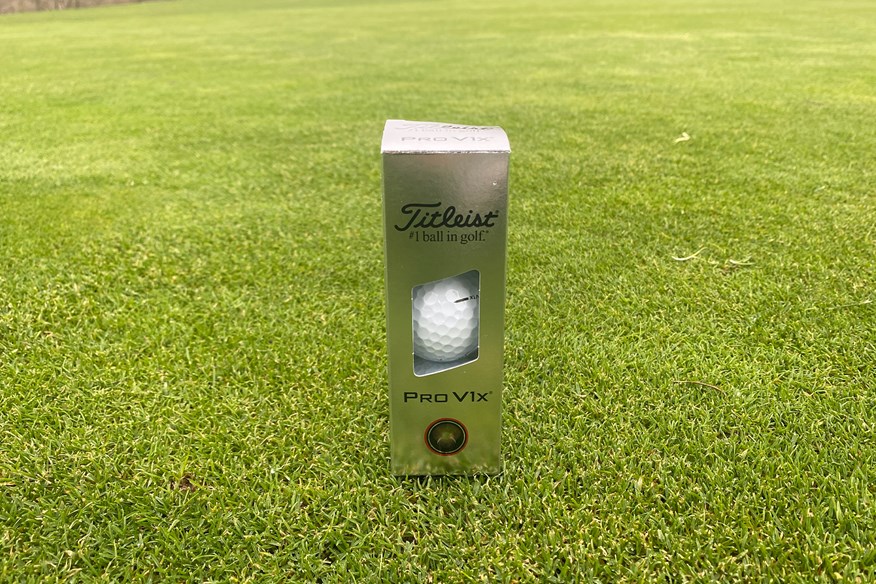
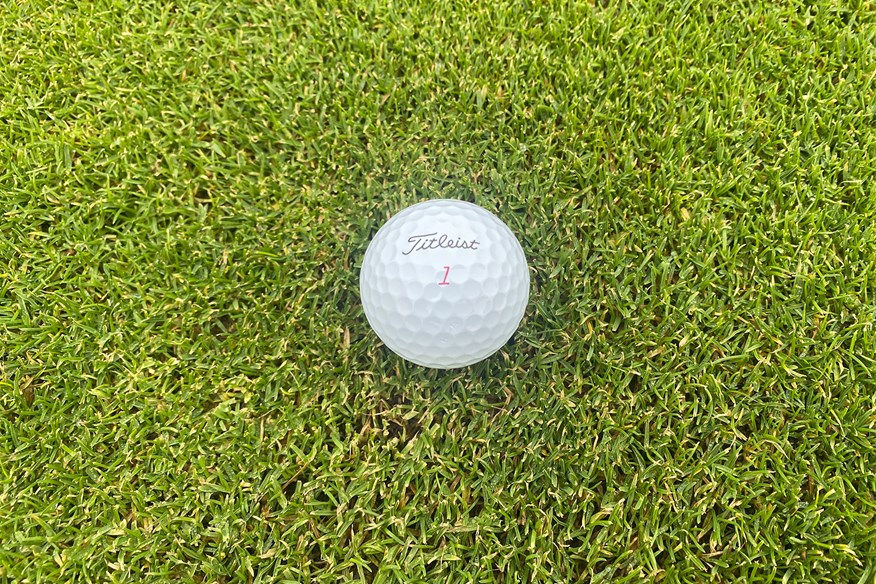
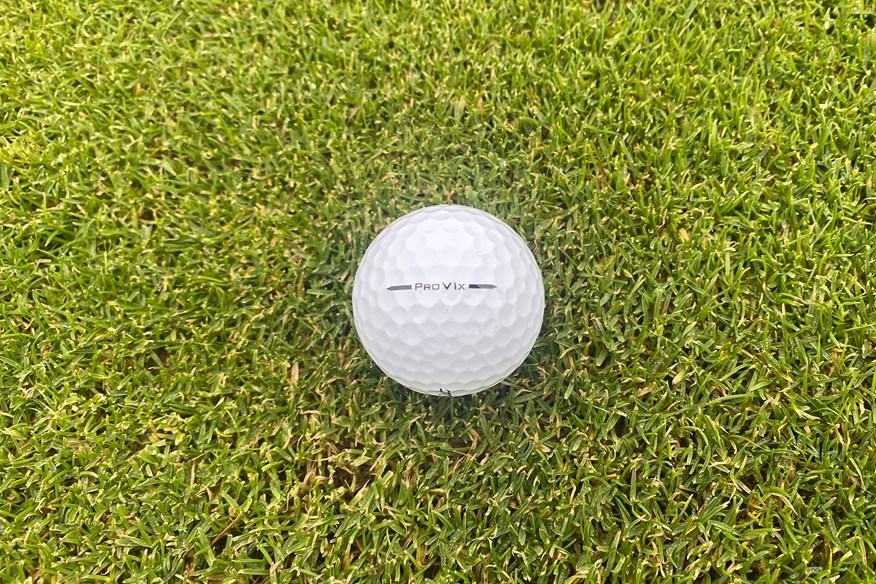
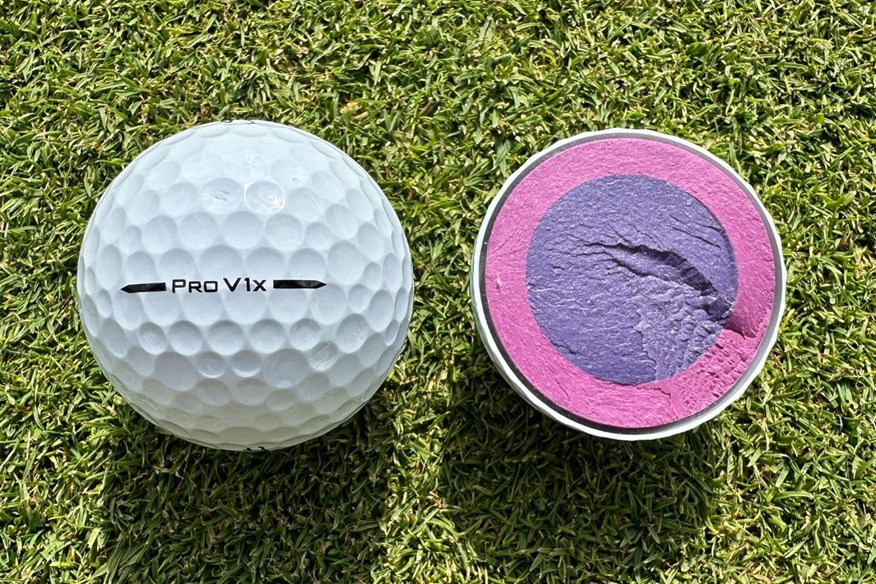
The Pro V1x's best performance came at 114mph, with a third-place finish for tee to green performance. Pro V1x delivers solid numbers at the quicker swing speed, but that performance soon drops off at moderate and slower swing speeds.
Titleist claims the Pro V1x is fast and long off the tee, higher flying than Pro V1, and generates more spin than Pro V1. It's close, but the Pro V1x does produce more spin when approaching and playing around greens than the Pro V1. Against golf balls in the same category, the Pro V1x is ranked seventh for iron and wedge spin.
Where the Pro V1x disappoints most is off the tee. We were expecting this golf ball to perform much better in our robot test - given it's one of the most popular golf balls on Tour - but sadly, it wasn't to be. At every driver swing speed, the Pro V1x doesn't produce as good numbers as the Pro V1.
However, it is very close. The Pro V1 pips the Pro V1x for tee to green performance, but the Pro V1x is the ball you should lean towards if you want more spin.
The performance of the Pro V1x highlights just how impressive the 2025 Pro V1 is.
On-course verdict
When I play the 2025 Titleist Pro V1x, I experience a consistently elevated launch and penetrating flight that gives me confidence from tee to green, and the performance really holds - shots fly true and controlled no matter the lie. It delivers great spin off the tee and exceptional short-game control around the greens, giving me more bite where it counts, and stands out as more durable than previous versions.
The feel is noticeably firmer compared to the Pro V1 and earlier generations, though I do feel it’s not as responsive overall - the feedback is a touch muted, which slightly dampens the experience I loved in the 2023 Pro V1x.
Still, it’s a high-performance ball widely trusted on Tour and offers speed, spin, and precision, just with a firmer, more reserved personality than its predecessor.
Read our full Titleist Pro V1x golf ball review.
Pros
- Towering and penetrating ball flight
- Amazing short game spin and control
- More durable than the previous generation
Cons
- Less responsive and worse feel than previous generation
| Carry distance (yds) | Driver 114mph - 272.6 | Driver 93mph - 208.5 | Driver 78mph - 159.6 | 7-iron - 155.8 |
| Ball speed (mph) | Driver 114mph - 163.9 | Driver 93mph - 133.8 | Driver 78mph - 112.6 | 7-iron - 108.9 |
| Backspin (rpm) | Driver 114mph - 2,711 | Driver 93mph - 2,717 | Driver 78mph - 2,619 | 7-iron - 4,699 | Pitch - 5,952 |
| Launch angle (°) | Driver 114mph - 11 | Driver 93mph - 12.8 | Driver 78mph - 13.7 | 7-iron - 20.9 | Pitch - 30.5 |
| Descent angle (°) | Driver 114mph - 37.2 | Driver 93mph - 32.3 | Driver 78mph - 27.6 | 7-iron - 45.1 | Pitch - 35.7 |
| Peak height (yds) | Driver 114mph - 32.2 | Driver 93mph - 22.4 | Driver 78mph - 15.4 | 7-iron - 29.5 | Pitch - 6.6 |
| Compression (psi) | 108 |
- Faster high gradient dual-core
- Spherically tiled 348 tetrahedral dimple design
- Speed amplifying high-flex casing layer
- Soft cast urethane elastomer cover
- 4-Piece construction
- Available in white and yellow
- Alternative models include AIM Enhanced and RCT
Vice's fastest and longest golf ball
The Vice Pro Plus is one of four golf balls in this category that didn't receive an award, but don't let that put you off. That's largely due to its tee performance. While this is the fastest and longest Vice golf ball, it's not overly competitive against other four-piece and five-piece golf balls.
At 114mph, Pro Plus is the third-lowest performing golf ball, the lowest performing at 93mph, and the third-lowest performing at 78mph. However, for approach play and short game performance, the Pro Plus does improve.
The backspin generated by the Pro Plus with the 7-iron shot is the third-highest within this category (4,807rpm), and the descent angle is 45.1°. The Pro Plus finished just outside the podium places for approach play performance.
It's the same story for short game performance. With 6,090rpm, Pro Plus finished fourth for short game performance by one revolution.
With the Vice Pro Plus, you might not have the most competitive golf ball off the tee, but from the fairway and around the greens, you can expect a golf ball that'll spin easily and is easy to control.
On-course verdict
This is the only golf ball in Vice's Pro range I recommend. That might sound harsh, considering the Pro is one of the best three-piece Tour-level golf balls, but in my on-course experience, I've not seen enough from the Pro that would make me recommend it over the Pro Plus.
This golf ball loses absolutely zero marks for distance, and as a whole, off the tee, I really couldn’t criticise the Pro Plus (except for one thing, which I’ll come to later). My main gripe is its performance around the greens; I just don’t feel as though it spins enough compared to other X-model golf balls.
It could be down to my chipping action, but I definitely find my joy around the greens with other golf balls when it comes to spin and control. Approaching greens, I feel very much the same as I do with regards to this golf ball’s performance off the tee.
Throughout the bag, I get very little feedback from any strike, whether it be good or bad. I distinctly remember hitting a really good tee shot on the 8th hole on the Ailsa Course at Turnberry and saying that it felt “dead”. When you really nail a drive, you want to be saying “that felt amazing,” but it left me feeling underwhelmed.
On the putting green, I feel as though there are more responsive golf balls than the Pro Plus, but you can’t argue with the roll, because it’s solid.
Ultimately, my overarching opinion on the feel and response of the Pro Plus is – as I’ve already mentioned – underwhelming.
Read our full Vice Pro Plus golf ball review.
Pros
- Solid performance from tee to green
- Brilliant value for a premium product
- A versatile model that works for ranging swing speeds
Cons
- A slightly muted feeling and limited feedback
| Carry distance (yds) | Driver 114mph - 271.9 | Driver 93mph - 208.2 | Driver 78mph - 160.5 | 7-iron - 155.2 |
| Ball speed (mph) | Driver 114mph - 163.6 | Driver 93mph - 133.7 | Driver 78mph - 114.3 | 7-iron - 112.9 |
| Backspin (rpm) | Driver 114mph - 2,780 | Driver 93mph - 2,848 | Driver 78mph - 2,643 | 7-iron - 4,807 | Pitch - 6,090 |
| Launch angle (°) | Driver 114mph - 10.9 | Driver 93mph - 12.7 | Driver 78mph - 13.7 | 7-iron - 20.8 | Pitch - 30.3 |
| Descent angle (°) | Driver 114mph - 37.4 | Driver 93mph - 33 | Driver 78mph - 27.8 | 7-iron - 45.1 | Pitch - 35.4 |
| Peak height (yds) | Driver 114mph - 32.2 | Driver 93mph - 22.8 | Driver 78mph - 15.6 | 7-iron - 29.4 | Pitch - 6.6 |
| Compression (psi) | 116 |
- Ultra thin cast urethane cover
- Versatile magnesium ionomer outer mantle
- Surlyn grade inner mantle
- Lightweight speed core
- 336 dimples
- 4-Piece construction
- Available in white and lime
- Alternative models include Drip, Shade, and Tracer
Best golf balls for approach play 2025: Robot test data
View the full golf ball robot test results.
| Golf ball | Srixon Z-Star Diamond | Srixon Z-Star | Callaway Chrome Tour X | Srixon Z-Star XV | Bridgestone Tour B XS | Wilson Staff Model | Wilson Staff Model X | Srixon Q-Star Tour | Titleist Pro V1x | Vice Pro Plus |
| Compression | 106 | 92 | 111 | 112 | 99 | 112 | 114 | 76 | 108 | 116 |
| 114mph Driver Ball Speed (mph) | 163.6 | 162.7 | 163.6 | 163.4 | 162.7 | 164.7 | 164.3 | 161.8 | 163.9 | 163.8 |
| 114mph Driver Launch Angle (°) | 11.2 | 11.1 | 10.8 | 11.2 | 11.0 | 11.2 | 11.2 | 11.0 | 11.0 | 10.9 |
| 114mph Driver Backspin (rpm) | 2988 | 2900 | 2997 | 2936 | 2964 | 2829 | 2797 | 2828 | 2711 | 2780 |
| 114mph Driver Carry Distance (yds) | 270.7 | 269.4 | 269.7 | 270.6 | 268.4 | 274.3 | 273.7 | 267.4 | 272.7 | 271.9 |
| 114mph Driver Height (yds) | 34.5 | 33.3 | 33.3 | 34.0 | 33.1 | 34.1 | 33.7 | 31.9 | 32.2 | 32.2 |
| 114mph Driver Descent Angle (°) | 39.4 | 38.5 | 38.7 | 39.0 | 38.6 | 38.6 | 38.4 | 37.4 | 37.2 | 37.4 |
| 93mph Driver Ball Speed (mph) | 133.8 | 133.1 | 134.3 | 133.6 | 133.6 | 134.0 | 134.6 | 132.6 | 133.8 | 133.7 |
| 93mph Driver Launch Angle (°) | 12.5 | 12.6 | 12.5 | 12.6 | 12.3 | 12.8 | 12.5 | 12.7 | 12.8 | 12.7 |
| 93mph Driver Backspin (rpm) | 2838 | 2859 | 3048 | 2857 | 3059 | 2703 | 2792 | 2720 | 2717 | 2848 |
| 93mph Driver Carry Distance (yds) | 207.8 | 206.6 | 208.9 | 207.7 | 206.7 | 209.2 | 209.8 | 205.5 | 208.5 | 208.2 |
| 93mph Driver Height (yds) | 22.4 | 22.4 | 23.4 | 22.6 | 22.8 | 22.5 | 22.6 | 21.8 | 22.4 | 22.8 |
| 93mph Driver Descent Angle (°) | 32.6 | 32.8 | 34.0 | 32.9 | 33.6 | 32.4 | 32.6 | 31.9 | 32.3 | 33.0 |
| 78mph Driver Ball Speed (mph) | 113.1 | 113.1 | 113.0 | 113.2 | 112.8 | 113.3 | 113.4 | 112.8 | 112.6 | 112.9 |
| 78mph Driver Launch Angle (°) | 13.6 | 13.7 | 13.5 | 13.6 | 13.7 | 13.9 | 13.8 | 14.0 | 13.7 | 13.7 |
| 78mph Driver Backspin (rpm) | 2719 | 2693 | 2921 | 2654 | 2795 | 2595 | 2623 | 2428 | 2619 | 2643 |
| 78mph Driver Carry Distance (yds) | 161.0 | 161.1 | 160.8 | 160.8 | 160.5 | 161.7 | 162.2 | 160.5 | 159.6 | 160.5 |
| 78mph Driver Height (yds) | 15.7 | 15.8 | 16.0 | 15.5 | 15.8 | 15.8 | 15.9 | 15.5 | 15.4 | 15.6 |
| 78mph Driver Descent Angle (°) | 28.1 | 28.1 | 28.8 | 27.7 | 28.4 | 28.0 | 28.1 | 27.4 | 27.6 | 27.8 |
| 7-Iron Ball Speed (mph) | 108.7 | 108.7 | 108.7 | 108.7 | 109.0 | 109.0 | 109.3 | 108.4 | 108.9 | 108.9 |
| 7-Iron Launch Angle (°) | 20.5 | 20.8 | 20.3 | 20.7 | 20.3 | 21.1 | 21.0 | 21.2 | 20.9 | 20.8 |
| 7-Iron Backspin (rpm) | 5149 | 4937 | 5242 | 4930 | 5170 | 4653 | 4782 | 4568 | 4699 | 4807 |
| 7-Iron Carry Distance (yds) | 153.1 | 154.1 | 152.5 | 154.2 | 153.5 | 156.3 | 156.1 | 155.6 | 155.8 | 155.2 |
| 7-Iron Height (yds) | 29.3 | 29.5 | 29.1 | 29.3 | 29.1 | 29.8 | 30.0 | 29.5 | 29.5 | 29.4 |
| 7-Iron Descent Angle (°) | 45.3 | 45.3 | 45.3 | 45.2 | 45.2 | 45.2 | 45.4 | 45.0 | 45.1 | 45.1 |
| 40-Yard Pitch Ball Speed (mph) | 46.3 | 46.6 | 46.2 | 46.3 | 46.7 | 46.4 | 46.3 | 46.8 | 45.9 | 46.1 |
| 40-Yard Pitch Launch Angle (°) | 30.0 | 30.6 | 29.5 | 30.3 | 30.0 | 30.6 | 30.4 | 31.5 | 30.5 | 30.3 |
| 40-Yard Pitch Backspin (rpm) | 6137 | 5926 | 6343 | 5948 | 6036 | 5993 | 6091 | 5575 | 5952 | 6090 |
| 40-Yard Pitch Carry Distance (yds) | 39.3 | 40.1 | 38.8 | 39.5 | 40.0 | 39.8 | 39.6 | 40.9 | 39.1 | 39.2 |
| 40-Yard Pitch Height (yds) | 6.5 | 6.9 | 6.3 | 6.7 | 6.7 | 6.8 | 6.7 | 7.3 | 6.6 | 6.6 |
| 40-Yard Pitch Descent Angle (°) | 35.1 | 35.9 | 34.4 | 35.6 | 35.3 | 35.8 | 35.5 | 37.2 | 35.7 | 35.4 |
Best golf balls for approach play 2025: Buying guide
Having one of the best golf balls for approach play at your disposal is going to help you find more GIR, but is it as simple as that?
Sadly not. There are other factors to consider, because with the best golf balls for approach play, we’re taking descent angle, spin, and carry distance into consideration, but that isn’t all you might have to consider.
As you can see from the options listed above, there are some of the best four-piece golf balls and some of the best three-piece golf balls. All of which behave differently. Even though they’ll all help you hit and hold greens, they won’t all perform the same.
Depending on your needs and requirements from a golf ball, reading through our detailed buying guide will hopefully provide you with some clarity as to which model will work best for you.
Ability
Regardless of your ability, you will benefit from playing with one of the golf balls best for approach play because you’re going to find more greens in regulation.
Budget
Budgeting is easily attainable if you’re looking to play with one of the best golf balls for approach play. Tour-proven models cost up to – and sometimes beyond – $60, but you can spend up to half that price by buying DTC golf balls or one of the best three-piece club golfer models.
The most important consideration is whether the golf ball will improve your game. If it’s the case that a $30 DTC golf ball enables you to play your best golf, then absolutely put that ball in play. However, if it’s hindering your performance, you’re much better off increasing your budget and finding a ball in this category that works.
Players who are new to the game or don’t get out often are more likely to budget when it comes to purchasing golf balls. Whereas more frequent and skilled golfers are less likely to budget and opt for more expensive golf balls. That’s not to say every golfer meeting one of those credentials behaves this way.
While I’ve probably been alive less number of years than some of you have played golf, I’ve had the pleasure of working in the golf industry for the entirety of my working life. During that time, I’ve seen golfers of all abilities splashing the cash on the latest golf clubs in the hope of improving their game and being thrifty when it comes to spending on golf balls – I’ve been a culprit of this myself in my early golfing days!
The next time you consider putting back a more expensive golf ball for a cheaper alternative, ask yourself if it’s going to perform in a way that’s going to allow you to play better golf or get the same enjoyment from the game. If the answer’s no, stick to your initial choice and think about where else you could budget with other equipment and accessories.
Feel
The vast majority of golfers look for soft-feeling golf balls, and you can easily find them among the best golf balls for approach play. Even golf balls labelled as being firm, such as the Wilson Staff Model X, is still soft compared to the rocks that used to exist. Many golfers enjoy soft-feeling golf balls because they deliver a sweet sensation off of every club in the bag – except if you skull one.
I enjoy playing with firmer golf balls like the Wilson Staff Model X and Titleist Pro V1x because I feel as though they provide more feedback and a stronger response. However, feel is completely personal, and like I say, it’s tough to find a super-firm golf ball because most are made to be soft to please the needs of more golfers.
Performance
Golf balls in this category are extremely high-performing, especially in approach play performance. Manufacturers have fine-tuned the overall performance of the golf ball to deliver outstanding approach play performance, but with most of these golf balls, their performance doesn’t end there.
With all of the best golf balls for approach play, you can expect amazing control, spin, and carry distance consistency. While one model might not be as high-spinning as another around the greens, it will still provide ample spin, and more than models not as highly-rated for approach play performance.
Spin
Optimal spin is crucial, and every golf ball in this list delivers admirable spin in approach play. Some deliver higher levels of spin than others, but depending on whether you’re looking for a low-spin or high-spin model, you should find one here.
I’ve seen firsthand how playing with the right golf ball can positively impact spin throughout your bag. During a ball fitting at Titleist, I discovered that a Titleist Pro V1x and Titleist Velocity performed very similarly with my driver, but with a 7-iron, the spin dropped slightly with the Velocity, and then with a 60° wedge, the spin fell massively with the Velocity.
Spin in the golf ball comes from the combination of layers within the golf ball reacting with one another. Cheaper golf balls tend to consist of two layers: the cover and core. Therefore, they don’t have the number of layers required to produce astronomical spin when attacking pins.
Another factor that helps to enhance spin is the cover material. Every golf ball in this category sports a urethane cover, which helps to generate more spin because it’s a more flexible material compared to ionomer or surlyn, which doesn’t create as much friction with the clubface as urethane does.
Spin is massively important because it can either make you hit and hold a green or hit and fly over the green. The best golf balls for spin are by far premium golf balls, because they consist of the best golf balls from this category. If you feel as though you need high levels of spin when attacking greens, have a look at the best high-spin golf balls. Alternatively, if you feel as though spin is hurting your game, check out the best low-spin golf balls.
Distance
I would honestly say that distance is the last factor to consider when purchasing golf balls. The best way to figure out which golf balls are best for you is by working your way back from the green to the tee box. The best way of doing this is with a launch monitor to see your numbers, but if you don’t have access to one, you can do it with your eye very easily.
Start by hitting wedge shots into the green and see which balls are performing best with spin, then work your way back to 7-iron distance and look for the same numbers with slightly more of an eye on carry distance. You should have whittled it down to one or two golf balls, hit them off the tee, and look at which performs the best.
If you’re testing expensive models against cheaper golf balls, I guarantee a premium golf ball will always come out on top. You will find one that performs well for you, or you might have the luxury of deciding between a handful.
By testing golf balls this way, you’ll end up with the ball that performs best in the short game, which is where you score. Distance is important, but there are other ways of improving distance without sacrificing spin in a golf ball.
Color
The most common golf ball colour is white; however, there are plenty of other colours and designs to choose from. More vibrant colors, such as yellow, orange, or green, are all easy to pick up, and they help some people with visibility – hence why they make for the best winter golf balls.
Other ways of adding colour to the golf ball can be by design, whether it be a splash of colour seen on Vice golf balls or an alignment design which also helps with visibility, such as TaylorMade’s Pix golf balls or Callaway’s Triple Track golf balls.
If you’ve only ever played with white golf balls, it might be worth trying a more colorful golf ball, especially if you’re always the one asking your playing partners, “Where did that one go?”.
Alignment
More and more golf balls are being released with enhanced alignment, and even standard golf balls have a more prominent alignment stamp now than they’ve ever had. The majority of brands now offer golf balls with enhanced alignment aids. The enhanced alignment aids can be extremely useful for putting and even lining up shots on the tee. Another plus of alignment golf balls is the alignment serves as a tool for finding your golf ball either in the air or among the trees.
Best golf balls for approach play: FAQs
What to read next
For performance insights tailored to your swing speed and preferences, head to our results hubs:
- Best 4 and 5-piece golf balls
- Best 3-piece golf balls
- Best 2-piece golf balls
- Best golf balls for fast swing speeds
- Best golf balls for average swing speeds
- Best golf balls for slow swing speeds
- Best golf balls for distance
- Best golf balls for short game
- Best golf balls for mid-handicaps
- Best golf balls for beginners
- Most consistent golf balls
